PLATINUM SPONSOR
GOLD SPONSORS
LUKOIL BURCKHARDT COMPRESSION SAIFEE & JOME

OTHER MAJOR SPONSORS
AMS (DESTINI ARMADA)




HMS MARINE TRADER
XIN LONG SHIP REPAIR CO. LTD.










PLATINUM SPONSOR
GOLD SPONSORS
LUKOIL BURCKHARDT COMPRESSION SAIFEE & JOME

OTHER MAJOR SPONSORS
AMS (DESTINI ARMADA)




HMS MARINE TRADER
XIN LONG SHIP REPAIR CO. LTD.










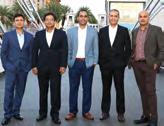
Roy
Moloy Podder
Alok Pandey
Design and Production

Simple Reels Genesis Pte Ltd


We are well into 2019, end of which will bring a major regulation into force. A regulation with such a high impact on shipping industry that hasn’t been since ships propulsion changed from Sails to Coal and then from Coal to Fuel Oil. The entire industry waits to witness the final outcome. No one is sure what to do – some are installing scrubbers while others have placed their bets on compliant fuels, yet others are planning innovative solutions like LPG Engines & Alternate Fuels. Batteries and Hydrogen Cells are also being tested, as technologies supporting these improve.
EU-MRV, IMO-DCS, Ship Recycling, Ballast Water Retrofits and headaches with existing Ballast Water Treatment Systems are few of the other challenges to companies in terms of extra investments required. This too in a climate where shipowners are struggling to make profits.

In all this certainty, job of a Marine Engineer becomes even more crucial as he has to keep up the running and maintenance of ships within tighter
budgets and yet ensure sufficient reliability and availability of ship for business.

This decade has also brought home the importance of innovation in marine industry, and how it helps in optimizing costs and improving efficiency. We have included articles on some of the innovations happening in industry. Its important to understand these technologies in order to benefit from them.
Amongst all this pressure, DMET-MERI Alumni, Singapore has taken time out to celebrate the quintessential Marine Engineer who is taking everything in his stride and keeps the propeller turning. This year’s reunion proves this.
Despite busy business schedules of members, Publishing Desk is proud to bring to you this year’s Reunion Magazine. This year’s drive was to improve production quality and content of this magazine. We hope you will all enjoy it. We look forward to your feedback and suggestions for the next year @ publishing@dmetsg.org ▄
For further information on sponsorship / advertisement contact us at publishing@dmetsg.org
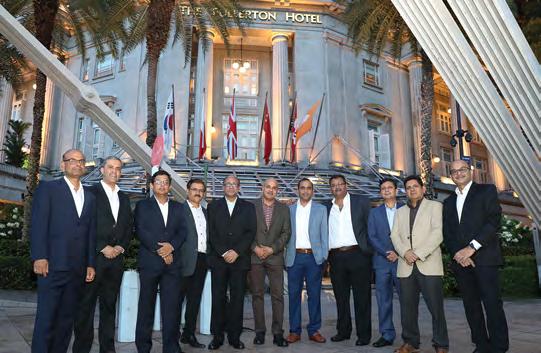
Manoj Bole President
Vinay Gupta Vice President
Sanjiv Mishra Secretary
Sanjay Verma Asst Secretary
Balaji krishnamurthy Treasurer
Upendra Dubey Asst Treasurer
Kapil Berry Executive Member
Alok Pandey Executive Member
BG Singh Executive Member
Deependra Singh Executive Member
Kaushik Roy Executive Member
Moloy Podder Ordinary Member
Brijendra Singh Bisht Ordinary Member
by DMET Alumni Band 8.45

It’s time for another Reunion of DMET MERI Alumni Singapore and the first event of the year – the 10th Reunion – to be held on 4th May 2019.
At the onset we would like to thank Alumni for supporting us. Participation of all is key to the success of the association. We have grown in numbers albeit at a slower pace.
In 2018 there were several changes in the Organizing Committee and new faces have been inducted into the committee during the AGM held in August 2018.
The committee has been working with fervour and enthusiasm since inception. The association managed to organize the first ever Technical Meet in September 2018.
Technology has been an integral part of our lives and we as a team have used this to simplify the processes for organizing our events.
The Alumni Association in Singapore is now on Linkedin and this will not only strengthen our network but also help alumni worldwide to be abreast with events and connect with us.


It was decided to do our bit for charity as part of social responsibility and we have this year contributed to Sree Narayana Mission in Singapore, more details are inside this magazine.
More events are planned for this year and we look forward to your continued participation in each one of them.

Fellow alumni, we are once again delighted to have you here at the 10th Reunion for an evening full of bonhomie, excitement and fun.
(3) - Top three winners
Cheers!
Organizing committee ▄
endorse any companies, products or services that appear in this publication. All material is accepted on the understanding that it is copyright free. The magazine accepts no liability for any subsequent copyright issues. The magazine does not accept responsibility for and does not endorse views expressed by contributors.
The Destini Armada group of companies, which includes Destini Shipbuilding and Engineering, Vanguarde, the Techno Fibre Group and AMS, is able to o er manufacturing and construction services together with maintenance and through-life support for a wide variety of government and commercial vessels. Destini Armada has the capability to construct specialist vessels of up 100 meters in length as well as manufacture lifeboats and integrated davit systems for government agencies, shipping and o shore industries.
The Destini Armada group of companies, which includes Destini Shipbuilding and Engineering, Vanguarde, the Techno Fibre Group and AMS, is able to o er manufacturing and construction services together with maintenance and through-life support for a wide variety of government and commercial vessels. Destini Armada has the capability to construct specialist vessels of up to 100 meters in length as well as manufacture lifeboats and integrated davit systems for government agencies, shipping and o shore industries.
The Destini Armada group of companies, which includes Destini Shipbuilding and Engineering, Vanguarde, the Techno Fibre Group and AMS, is able to o er manufacturing and construction services together with maintenance and through-life support for a wide variety of government and commercial vessels. Destini Armada has the capability to construct specialist vessels of up to 100 meters in length as well as manufacture lifeboats and integrated davit systems for government agencies, shipping and o shore industries.
The Destini Armada group of companies, which includes Destini Shipbuilding and Engineering, Vanguarde, the Techno Fibre Group and AMS, is able to o er manufacturing and






AMS was established in Singapore to build and repair ships, tankers and other ocean-going vessels as well as manufacture and repair of marine engines. The company has three core business divisions which are; design, fabrication and servicing of heat exchangers, fabrication, installation and erection of piping and steelworks, calibration and automation for the marine, shipping and oil and gas industries.
42A Penjuru Road, #06-00, Singapore 609164
Tel: +65 6264 8222 | Fax: +65 6264 4948
Email: info@amsmarinegroup.com
Destini Shipbuilding & Engineering is a shipbuilding and ship repair company located in Port Klang, Selangor. The company has the capability to fabricate a wide range of vessels of up to 100 meters in length for the Government, maritime agencies as well as commercial marine companies.



No 10, Jalan Jurunilai U1/20, Hicom
Park, 40150
Alam, Selangor Darul Ehsan Malaysia.
Tel: +603 5567 0333 Fax: +603 5569 1233 info@destinigroup.com
Techno Fibre was established in 1993 in Singapore to serve the marine safety industry. As the years progressed, the group of four entities has evolved geographically to have a foothold in Australia and the UAE as one of the foremost names in the whole spectrum of lifeboats and marine safety industry.
42A Penjuru Road, #06-00, Singapore 609164
Tel: +65 6266 1412 | Fax: +65 6266 1435
Email: rajesh@techno bre.com
Singapore-based Vanguarde manufactures lifeboats, fast rescue boats, davit systems and a host of other safety and survival related equipment for the marine and oil and gas industries in South East Asia. The company prides itself of being able to build self-propelled hyperbaric lifeboats which are highly in demand as it meets the highest standards of marine safety and survival.
42A Penjuru Road, #06-00, Singapore 609164
Tel: +65 6887 5034 Fax: +65 6887 5043
Email: enquiry@vanguardelifeboat.com; shantanu@vanguardelifeboat.com
The Destini Fibre construction through-life commercial construct well for

As we look back, we can pride ourselves with the number of stalwarts that passed out of our institution spreading their wings to soar unfathomable heights across the globe. This has not been limited to Ship Management only, but teachers, technocrats, managers, industry leaders, authors, to name a few. The Alumni Council has reposed its faith in me to continue as the President of this esteemed organization, and hence, it’s my privilege to be able to write this message to you today.
am grateful that, last year, when I called out to my fellow aluminites to join the Alumni Council, many from the younger generation volunteered. After such an enthusiastic participation, this year’s event is brought to you by a new and younger team with fresher and better ideas. also thank the office bearers who have stepped down to pave way for the next generation to take the mantle. Their hard work has made this organization what it is today. This year’s Annual Reunion is the 10th reunion for Singapore Alumni and is a showcase for years of hard work since 2004 that has gone into raising the bar of the event management.
New 1500 m3/h UV reactor for PureBallast 3
Alfa Laval PureBallast 3, the third generation of the leading ballast water treatment technology, is now even more optimized for large ballast water flows. A new 1500 m3/h reactor enables large-flow systems with less cost and complexity – and all the advantages that chemical-free UV treatment has over electrochlorination.
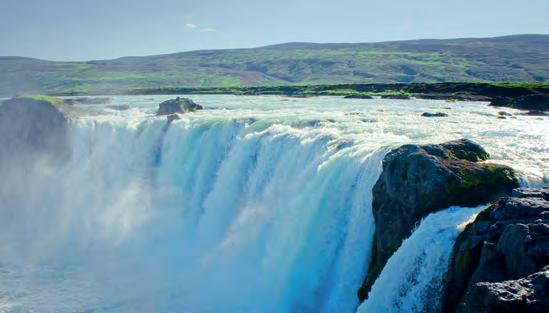
Discover the big difference at www.alfalaval.sg/pureballast
This year we decided to assign a name our magazine...a signature which is easy to connect to. After dabbling with various ideas, a very apt suggestion of naming it as “Engine Room” came up. The idea was liked by all for its simplicity and an easy connection every aluminite will feel with this name, since we have all spent most of our onboard working lives inside it. The idea clicked and when it was proposed to the Organizing Committee, it got almost instant approval. The idea of adding “The” in front of “Engine Room” creates a better impact for a magazine name. It is not any “Engine Room” but “THE ENGINE ROOM” which is part of our lives.
Recalling the good old days at DMET-MERI, the training structure itself developed a bond that has enabled us to stay connected, through thick and the thin of shipping industry and allowed us to compete globally. We are 340 plus strong today in Singapore and still counting. Our organization exists with a motive to unite alumni, magnify their impact globally, and position and retain them as a much sought-after brand in the global shipping industry. We request your suggestions and opinions on taking this organization to the next level.
Stay tuned as we roll out an exciting line-up of events that are planned for the current year. Starting with the Reunion, we intend to have the Technical Meet, and Family Day followed by the most awaited event – Diwali Movie. If you are interested in contributing in the organization of these events, please attend AGM planned later this year or contact members of Alumni Council to volunteer.
As we trot towards our goal, thoughts stay in our mind to incorporate and initiate philanthropic activities from our Alumni forum to help those who need it more than the others and give back to the society at large. To mark 10 th Annual Reunion it was decided by the Organizing Committee to participate in philanthropic activities in Singapore as a part of our social responsibility. Sree Narayana Mission, an old age home located in Yishun, was chosen as charity for this year. A lunch was organized for the inmates of the home on 13 th of April. A donation is also planned for Narayana Mission on 10th of May when they host a dinner to celebrate their 70 th Anniversary.
We use a WhatsApp number and transmit information and details through it from time to time. In order to receive messages, you need to save the number +65 8433 2312 in your address book. You can also send any suggestions you have at dmet@dmetsg.org. We have also increased the connectivity for our members through our dedicated Website, Emails, Facebook and LinkedIn pages where you can share your stories and memories. The WhatsApp broadcast number ( +65 8433 2312 ) is a great success and most of the Singapore Alumni are now connected on it. It is highly recommended to save this number on your contact list to receive regularly broadcasted updates. I am confident such connectivity will help strengthen our bond. Please send any suggestions you have to dmet@dmetsg.org
Thanks to all those who are able to attend this 10 th Reunion. look forward to connecting with you at one or more of our events this year. Do enjoy meeting your batch mates, and the grand shows planned for the day and tantalise your taste buds with delicious food that chefs have prepared specially for this occasion. We will not let you leave the hall before you rock the floor with some gyrating music brought in by our celebrity DJ that will reboot you for the productive and prosperous year ahead.
Have Fun.
Yours Sincerely,
Manoj Bole (Roll No. 3470) President (2019)
www.dmetalumnisg.com
Lloyd’s Register has developed a free evaluation tool in response to many enquiries from our clients to help them assess their possible routes to compliance with the global sulphur in fuel oil limit of 0.50% by 2020.

Visit lr.org/sulphur2020

It was nice to hear from Singapore Alumni and thanks for remembering your Alma Mater. It is always pleasure to learn that the alumni remains connected and is passionate about the welfare of institute. must acknowledge that it is a common trend with most of the prestigious institutes in the world to have a glorious and successful alma mater whose personal brilliance collectively lights up the academic space and proves an attraction for the aspiring youth to be part of the institute. In the coming years, it is critical that the alma mater remains more participative in the affairs of the institute and helps us to grow to a centre of excellence.
Your Alma Mater has a unique distinction of being probably one the very few institutes in post-independent era to be inaugurated directly by the Honourable Prime Minister; created for national interest and necessity. It has undergone several role changes with time, like for initial days we provided the qualified manpower who shored up the growing shipping and shipbuilding capacities of the nation till 1980s, after which we started providing manpower to foreign companies and all of a sudden Indians officers (especially engineers) found themselves at the crest of the demand curve for the quality man-power through out the world. After the business of ship management started to mature and mushroom throughout the world, these trained manpower from our institute found themselves at the important and top positions of the shipping management companies, many of which had been started by them.
This campus changed its name from Directorate of Marine Engineering and Training (DMET) to Marine Engineering and Research Institute(MERI) in 1996 and once again to Indian Maritime
University(Kolkata Campus) when the Indian Maritime University (IMU) Act was passed in 2008. Under the aegis of IMU we have started the Master’s Degree Program in both Marine Engineering and Marine Business Administration. We also have MS by Research for the Permanent faculty and slowly the young Alumni have started joining the Institute back as faculty. We have the most advanced Engine Simulator and have started major research initiative with the CIMAC, Wartsila and other universities in the world. We also have started modular post sea courses.
Our facilities have received a lot of upgradation viz., a huge auditorium capable of housing 1500 students, new CNC machine in our workshop, state of art Vibration Lab and large capacity new Academic Block. We have got a separate enclosure for a large two stroke marine diesel engine which we hope will be operationalised in near future. You would see a Green-field institute by next year. There is nothing more pleasurable than coming back to your institute and being a part of it; since it makes your life come full circle, “where it all began”.
As a retired senior defence officer, close with a few wise words of great maritime thinker Alfred Thyer Mahan “those who rule the waves rule the world” and as per one of the great strategist of 19th century Sir Julian Corbett “Command of the sea, therefore, means nothing but the control of maritime communications, whether for commercial or military purposes. The object of naval warfare is the control of communications, and not, as in land warfare, the conquest of territory”.
Best wishes for the DMET-MERI Singapore Alumni Reunion 2019. ▄
CV Subba Rao
Dear esteemed members of the DMET-MERI Alumni, Singapore,
Iam delighted to note that you have a strong fraternity of 350 members in such a strategic location, Singapore. Much as a cliché, a bonding of such nature creates a sense of wellbeing and happiness, and am sure all of you add to the growth of Singapore and its flourishing economy. would imagine that the underpinning culture of DMET-MERI saddles your inclusivity in a cosmopolitan atmosphere that you engage in.
I am a big believer in people and technology. Given the vagaries of our trade, I reckon that as a body, you have been able to leverage your education in the school well, when it gets transported to the shop floor.
We all understand that, just as for other faculties, marine engineering education is at the cusp of transformation that needs a reform, in letter and spirit. Too often and for too long, we have been driven by the logic of class room rote learning, without due consideration to the faculties of the human mind, which given an opportunity explores every thought and every action, in a manner many of us fail to fathom.
It is in Mark Twain’s language that one embarks onto a powerful domain of learning, as he rightly reflects, “I never let my schooling interfere with my education”.
am sure that you would know the steps being taken by Singapore in exploring the frontiers of education. wonder if your body could work with the local authorities in the education sector, and see if we could adopt such changes in our processes of admissions, curriculum and faculty.
Technology is changing at a rapid pace. am sure your body is closely following the changes in this area, and are able to see if it could be cuff linked into the domain in which you are operating.
We all live in a bubble of generations; while on the surface we seem to pass the baton from one to the next, we often get caught in a web of uncertainty and hesitancy. We fall prey to the oft repeated logic of “the young are not doing as well as we did”, and we end up without a clear succession plan for the future of our industry.
Let us be aware of our responsibilities and the travails that such responsibilities bring forth to our doors.

On this happy occasion of the DMET-MERI 2019 Reunion, wish you all and your families all the best in all your endeavours. ▄

Safety, cost-effectiveness, and reliability is at the heart of what we do.

“We are extremely pleased with the services provided to us by CTS Offshore and Marine and have no hesitation in recommending their commendable work.”
Our in-situ asset integrity teams are on standby 24/7, 365 days a year to ensure that we are where you need us, when you need us.
Class of 1964
Introduction
The International Maritime Organization (IMO) is one of the United Nation’s divisions tasked with the responsibility of safety, security and minimizing marine and atmospheric pollution by shipping.

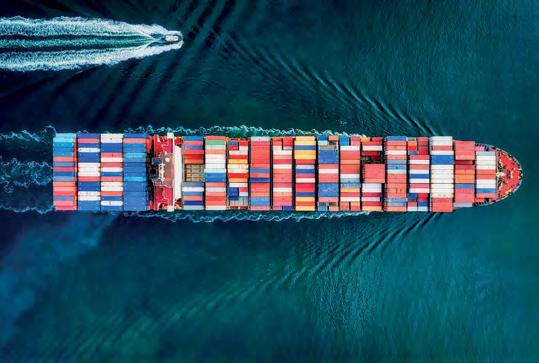
The IMO has been working to reduce harmful impact of shipping on the environment since the 1960s. Annex VI to the International Convention for the Prevention of Pollution from Ships (MARPOL Convention) was adopted in 1997, to address air pollution from shipping. Annex VI seeks to minimize air pollution from substances such as SOx, NOx, Ozone Depleting Substances (ODS); regulation of shipboard incineration discharge and control of emissions of Volatile Organic Compounds (VOC).
The IMO has set a global limit of 0.5% of sulfur content in marine fuels starting on 1st January 2020. The current sulfur limit is 3.5%. In more restricted Emission Control Areas (ECA) the sulfur content in marine fuels can only be 0.1%. IMO has confirmed that the date of 1st January 2020 is firm and there will be no postponement of this date. What option are available to Ship owners / operators to meet the requirements of this regulation.
Many in the Industry consider these latest requirements as a major disruption. am of the opposite view. consider these regulations as bringing in new opportunities – development of new grades of fuels by refiners and can maximize their profits. Use of alternate fuels will come into play and there will be corresponding development of technologies and fresh avenues for business. Use of scrubbers will become more common on ships which amount to reduction of costs in ship operation.
What are the possible options to meet the requirements of new regulation:
A. Us e of compliant fuel ( no more than 0.5% sulfur in the fuel ). This will mean use of distillate or low sulfur fuel blends availability of which the refiners have confirmed. Various refineries such Shell Exxon Indian Oil etc have confirmed that they will make the compliant fuels available around the 3 rd quarter of 2019. IMO has also advised that ISO will publish fresh standards for these
fuels sometime during the 3 rd quarter of 2019. However there are some issues that need to be kept in mind. Will these fuels ( BLENDED ) produced by different refineries be compatible with each other and will they be stable. Otherwise they may create operation problems such as generation of excessive sludge and choking purifiers and filters on board ships. Additionally these fuels will also be more expensive. Price spread between these fuels and high sulfur fuels ,as currently used is estimated to be a minimum of USD 200 per ton causing the operations cost to shoot up. There will other technical issues such as poor lubricity of these new fuels leading to fuel pump and fuel nozzle problems. Of course there are solutions to all problems but will require extra efforts and cost.
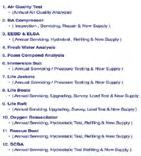
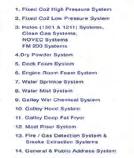
B. Us e alternate fuel such as LNG – LNG is environmentally friendly and and has no sulfur content but LNG retrofitting is very expensive and LNG bunkering is possible only in a few ports. At this time this is not a practical option. In the longer terms LNG may gain as a desirable option.
C. Ano ther option and a sensible one is to fit exhaust gas scrubbers By fitting scrubbers you can continue to use cheaper fuels and and use scrubbers to wash the exhaust gases to remove the harmful gases and resultant emissions are equivalent to using low sulfur fuels. Scrubbers are easy to operate help you save money on fuel costs and environmentally very effective. Ship owners will have to decide between using high Sulfur fuel along with an exhaust gas scrubber, or using distillates or other alternate fuels with very low Sulfur content. The cost and availability of alternative fuels such as LNG and the cost of retrofitting existing ships make this least viable and least likely choice for ship owners. Distillate fuels or low sulfur blends will be available. However, the possible poor quality of blends will give rise to associated problems in storage and use in the engines. The differential costs between high sulfur fuel oil and the lower sulfur blends or distillates will increase as 2020 approaches and likely stay increased for the near future. The lead time for refineries to prepare to make all the heavy fuel to distillates is also not sufficient to meet the 2020 regulations. This makes the use of heavy fuel oil with the use of a scrubber the most attractive and economical option.

And one fine day when disembark my last ship. As she goes away billowing from funnel. However old and rusted she was, however far farther she propels, it was only water all around, it was only humming machinery sound. The bollard where I sat and cried alone, the cabin where dreamt alone, also a few good fellas who saw it all. They who were there with me, when I drifted away.
Now that I am coming Home, now that I have done it all, I shall sign off one last time. Ship’s register will fade away. You shall be junked my dear ship. And one fine day when disembark my last ship, as she goes away my love, I tell ya, was a sailor once, a sailor shall always be.
Dash
By Anil Deswal Roll Number 4268 Class of 1995
From making me smile every day contrasting with having deep conversations..
love her, with all my heart even whenever we’re unfortunately far apart..
From laughing wildly at the most imbecile matters to sending one another endless pictures of us bawling our eyes out..
love her, her dynamic personality and pure soul..
From continuously barging into each other’s houses considering it to be our own to being equally as comfortable in school as we pass by corridors repeatedly informally communicating..
I love her, her smile, her eminently high yet lulling voice..
From trusting her with all my flaws, sharing my deepest secrets eagerly, to always being there for me when shut myself away...
love her, her limitless magnanimity, her tenderness, her warmth..
From just feeling so content with such a wonderful outgoing being to appreciating her efforts through a few words, I’ve found my tranquility, have any of you??
love my squirrel with all my heart
He’s my sweet little tart
He is striped but boy! He does not like to be wiped With a wet cloth and some soap
He has a cage with a bridge made of rope
His bed is made of a nest In which he loves to take rest
His eyes are like balls of cuteness wonder how he’d look toothless
I know will never forget my doll Even if he is really small
By Ashreya Shankar, 10 years old D/O Shankar Subramanian Roll Number 4262 Class of 1995 By Riddhi Garg (Mishtu) D/O Anubhav Garg, Roll Number 3913 Class of 1992

All of the marine scrubber manufacturers currently use the vertical in-line scrubber design. There are many disadvantages associated with the vertical scrubber design. Recently a horizontal design has been introduced with many advantages.


Scrubbers are an assorted group of air pollution control equipment which are used to remove certain gases or particulate matter from an exhaust gas stream.

They have been used widely in land-based applications. They are used for acid fume scrubbing, chemical fumes, paper and pulp industry, food processing industry, steel manufacturing industry, power plants, fertilizer and pharmaceutical industries.

Scrubbers are divided into the more common wet scrubbers which use a liquid to perform “scrubbing” or dry scrubbers which use a dry sorbent or dry spray absorbers.
Wet scrubbers work on the principle of a scrubbing liquid interacting with the exhaust stream to cause mass transfer of the gas into the liquid. This is dependent on the liquid to gas ratio (L/G ratio). The liquid quantity is often expressed in gallons per minute (gpm) of liquid and the gas volume is expressed as actual cubic feet per minute (acfm) of gas. This ratio is determined by the required concentration of the pollutant gas in the exhaust stream after scrubbing, solubility of the gas pollutants, the dwelling time of the gases in contact with the liquid, the temperature of the gases being scrubbed, the concentration of pollutants and particulate matter in the gas stream, and the mass transfer characteristics. Increasing L/G ratio usually increases the scrubbing efficiency of the equipment. However, this has to be weighed against the operational costs and an optimal L/G ratio can be reached in wet scrubbers.
There are many types of wet scrubbers. The most common ones are the spray towers, cyclonic scrubbers, tray towers/chambers, venturi and packed bed scrubbers.
They are characterized by the scrubbing liquid goes through spray nozzles and comes out as droplets. Using the increased surface area from multiple small droplets, there is more efficient scrubbing of the exhaust gas. The droplets must have uniform spray distribution and adequate size. If the header pressure is reduced, the droplet size can increase thereby reducing the effectiveness of scrubbing. Particulate removal happens due to impaction of the particulate matter on the droplets. They usually have lower power consumption, lower fouling and lower operating costs.
Cyclonic scrubbers
The exhaust gas stream enters the cyclonic spray tower at a tangent to the wall. The gas inlet is narrowed which furthers increases the velocity of the gas. The gas flows in a cyclonic manner within the cyclonic scrubbers. The scrubbing liquid is usually sprayed from nozzles in a central pipe. The liquid droplets are subject to the centrifugal force as a result of the spinning motion of the gas stream. This causes them to be moved to the scrubber walls. The droplets fall to the bottom of the scrubber along with the particulate matter. The cost of a cyclonic scrubber is more than a spray tower/chamber and the operating costs are also higher.
Tray towers/chambers
Tray tower/chamber scrubbers consist of a tower or chamber with perforated trays. The exhaust gas mixes with the liquid over the tray with increased gas liquid contact compared with the spray tower/ chamber designs. The trays used are called impingement trays. There is liquid flow over these trays which can remove certain gases and particulate matter. Due to the low velocity of the liquid, the L/G ratio can be small for these. Baffles can be placed before the impingement trays with settling out of the particulate matter before it goes through the perforation of the impingement tray. The cost of a tray chamber is higher than a spray chamber and operating costs are also more.

Venturi scrubbers use the velocity change and energy of the exhaust gas stream to convert the scrubbing liquid into small droplets and maximize the interaction between the exhaust gas and the liquid.
A venturi has a converging part, throat and a diverging part. The exhaust gas stream enters the converging part. As the diameter decreases in the throat, the velocity of the exhaust gas increases. This increased gas velocity is able to convert the liquid into small droplets enabling improved mixing of the gas and liquid and scrubbing. Venturis can remove both particulate matter and gases. Venturis are among the best in the wet scrubbers at removing particulate matter. However, venturi scrubbers are more expensive, consume more energy, have higher pressure drops and have higher operational costs.
Packed bed scrubbers
Packed chamber/tower scrubbers contain a bed of packing material. The packing material provides a larger surface area for gas-liquid contact. The scrubbing liquid is used to wet the packing material and form a thin film. The exhaust gas interacts with the liquid all over the surface area of the packing material. Packing materials are available in an assortment of shapes, weights, pressure drop, surface areas, corrosion resistance and cost. Packed bed scrubbers can provide ideal gas removal/scrubbing with optimized L/G ratio.
Many scrubber systems have one or more of these different components to achieve the total scrubbing requirements needed from the system.

Modes
Open Loop
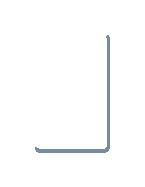




The scrubber can be used in the open loop mode where the scrubbing liquid is sea water. The sea water’s natural alkalinity is used to “scrub” the SOx from the exhaust gases. The wash water is then treated and discharged back into the ocean after treatment.
Closed Loop
The scrubber can be operated in the closed loop mode when the alkalinity of the sea water is not adequate or where there are regulations for no discharge of the used sea water. In closed loop, sea water with an alkaline substance such as sodium hydroxide (caustic soda) is used for scrubbing. The wash water is recirculated and a small quantity keeps getting bled off. This is treated by the wash water treatment equipment and then discharged into the sea. Any loss of water from this operation is replaced by additional water. If water cannot be discharged, then it can be stored in a holding tank.
Hybrid Operation
The scrubber can be used in both closed and open loop modes. The closed loop mode can be used while in port and during maneuvering. A switch to the open loop mode can be made in open seas.
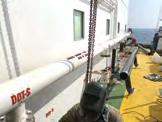
Counter Current Flow
The scrubbing liquid and the exhaust gas flow in opposite directions in a tower. The countercurrent flow is best suited for conditions where the peak of the SOx concentration may not be predictable and where there can be large variation in the SOx concentration.
Co Current Flow
The exhaust gas and liquid stream move in the same direction. These are not as effective as the counter current scrubbers. Co current scrubbers maybe used when space is limited and if high efficiency scrubbing is not needed.
Cross Current Flow
The exhaust gas and the scrubbing liquid flow at right angles to each other. The liquid usually flows vertically down and the exhaust gas flows horizontally. This type of scrubber can be used where space is a premium and where lower pressure drop is desired. The operating
costs are also lower in this scrubber when compared with the countercurrent scrubber. This scrubber is suited for applications where the maximum SOx concentrations are known and predictable.

The exhaust gas volume coming from the main engine depends on the MCR (maximum continuous rating). Other factors that will need to be considered in the estimation of the exhaust gas volume are whether the auxiliary engine is to be connected, if there is a boiler exhaust that has be connected, the time the ship is in the ECA (emission control area) and out of the ECA regions. The exhaust gas coming from the main engine usually comes out at around 250 ° C.
The mechanism of SO 2 absorption in seawater is impacted by several factors such as the sea water temperature, partial pressure of SO 2 seawater salinity, seawater alkalinity, interfacial contacting area between the exhaust gas and the seawater and residence time. The absorption capacity of the sea water declines with reducing salinity and alkalinity.
The temperature of the exhaust gas where it meets the sea water for majority of the scrubbing needs to be lowered so that the efficiency of the sea water scrubbing can be maximized. Scrubbing also necessitates a large contact area between the exhaust gas and the seawater.
The advantages of Horizontal scrubber include lower weight, significant ease of installation, lower immobilization time for installation, stability, ease of access for service and maintenance, lower weight to carry for all future voyages and hence lower fuel use and overall lower power consumption.
Manholes can be placed in the scrubber. These can be opened and the inside of the scrubber can be examined as needed. Given the height of the horizontal scrubber, there is easy access to view the inside of the scrubber.

The Guidelines permit two basic Schemes to be used for approval, Scheme A or Scheme B.



Scheme A is based on initial emission performance unit certification together with a continuous parameter check of operating parameters and daily exhaust emission monitoring.
Scheme B is based on continuous exhaust emission monitoring together with a daily parameter check of operating parameters. A majority of ship owners and operators have chosen Scheme B certification.
Approximately 2000 scrubbers are on order with various manufacturers world wide. Many owners are looking favorably at fitting the scrubbers mainly considering economic advantages. Capital costs are recovered within one year to one and half year and after that savings on fuel costs are for the owners / operators.


In recent developments even the charterers are offering higher day rates for ships fitted with scrubbers and in some cases even offering to finance the scrubbers and retrofitting.

PLEASE CONSIDER CAREFULLY THE COSTS AND SAVINGS AND MAKE A WELL CONSIDERED DECISION. ▄




Additive manufacturing (AM), also referred to as 3D printing, is a common name for technologies where an object is manufactured layer by layer. Additive manufacturing enables the building of three-dimensional, solid objects from digital models, and thus the realization of complex parts. This is in contrast with many traditional manufacturing methods, where the final parts are machined out from a pre-made form.
AM is expected to revolutionize the way products are designed, manufactured and distributed. Together with digitalization it is viewed as another potential game changer in the maritime, offshore, oil & gas industries. The use of AM results in new designs for more efficient components, it could also allow spare parts to be produced locally around the world. This would equate to less lead time, less cost, less logistics, and less need to keep stocks of spare parts. This would shorten the time required for repairs and contribute to more efficient ship operations. AM could also be used for maintenance and repair, simply adding layers of material to worn components, thus negating the need to replace them.
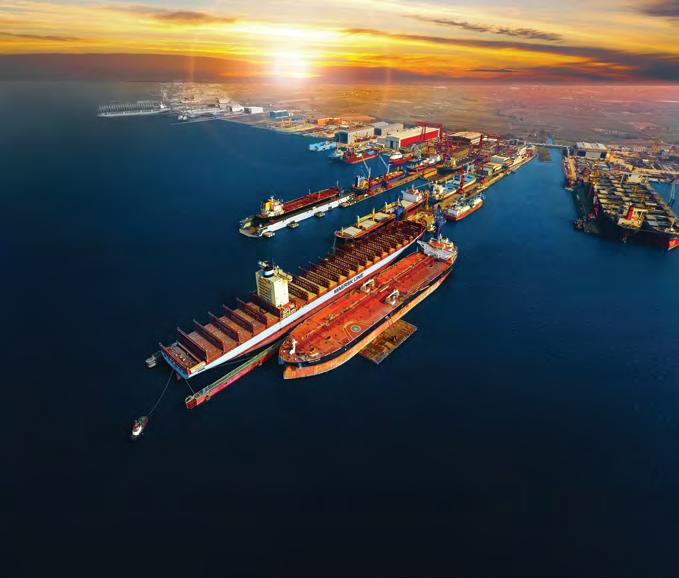
However, one of the most serious hurdles to the broad adoption of additive manufacturing of materials is the qualification of additively manufactured parts. For shipowners, while the potential to save costs and time is promising, the risks associated with AM parts and their quality assurance – which includes answering the question whether a given part is “fake” or not – could increase.
To address this, in 2018 DNV-GL released the first approval of manufacturer (AoM) scheme for additive manufacturing producers wishing to supply products that comply with the DNV-GL rules and
standards, following the publication of the first guideline for the use of AM in the maritime and oil & gas industries in 2017. The guideline - DNVGL-CG-0197 – offers a step by step process. Beginning with a complete review of any requested 3D prototype model that is to be printed. DNV-GL looks at the design, functionality, materials – every parameter that will impact upon the final product. Then there is then a technology assessment, manufacturing procedure qualification, data transfer and then the printing and post processing. DNV-GL is also physically present for the printing of the prototype, with a full understanding of the printer capability, to ensure that it can be emulated anywhere around the world.
To examine the potential of additive manufacturing, DNV-GL is carrying out several joint industry feasibility and pilot study projects on 3D-printed products in the maritime and offshore industries, in collaboration with our industry partners. DNV-GL established a new Global Additive Manufacturing Technology Centre in Singapore that is supported by the Singapore Economic Development Board (EDB). The center serves as an incubator and testbed focusing on DNV-GL’s global competence and service delivery for assurance and advisory services in additive manufacturing for the maritime, offshore and oil and gas industries. Most recently, in April 2019 DNV-GL has been appointed as the lead researcher of the first phase of a new Singapore-based joint industry program by the Maritime and Port Authority of Singapore (MPA), to study the feasibility of additive manufacturing (AM), or 3D printing, in the maritime industry. In this joint industry program (JIP) initiated DNV-GL teamed up with ten member companies of the Singapore Ship Association (SSA) to examine how spare parts produced by 3D printers can help the capital-intensive industry to cut costs and downtimes. ▄
The FIVA (Fuel Injection-Valve actuator) Valve is essential to the running of the new generation electronic engines as it controls the fuel injection and the exhaust valve actuation. FIVA valve carries out the injection profiles specified by the control system with absolute precision. This enables fuel consumption to be reduced and ultra-low emissions to be achieved - even in extreme conditions.
This is the reason why the FIVA Valve is considered an essential wear part which need to be reconditioned and calibrated at set intervals to meet performance standards. As an alternative to buying new expensive FIVA Valves, facilities are being set up for reconditioning FIVA units to their original design and quality, but at a much lower cost. In future, full exchange program of FIVA is also being planned to relieve the ship managers and ship owners from the burden of replacing FIVA valves at higher costs.
Injection Control Unit (ICU) – widely used on Wartsila RTFlex engines - is a type of electronic control unit that controls a series of actuators on an internal combustion engine to ensure optimal engine performance. It does this by reading values from a multitude of sensors within the engine bay, interpreting the data using multidimensional performance parameters and adjusting the engine actuators. Before ICUs, air-fuel mixture, ignition timing, and idle speed were mechanically set and dynamically controlled by mechanical and pneumatic means.
Complete test rig for the ICU, FIVA and the HPS (hydraulic power system) is being set up in Singapore to provide full testing facility to the ship owners and ship managers to have the ICU/ FIVA/ HPS fully tested as per original specification. ▄


www.recreatemarine.com Email: recreatemarine@recreatemarine.com
Services offered
• Hull, structural, piping, engine and mechanical repairs
• In-situ machining of crank shafts (main and auxiliary engines)
• Cold metal stitching of damaged A-frames of marine engines
• Hydraulic works
• Main propulsion system service and troubleshooting

• Voyage repair services
• Marine Consultancy services:





o Sale & purchase inspections of all types of ships including oil/ chemical/ gas tankers/dry vessels
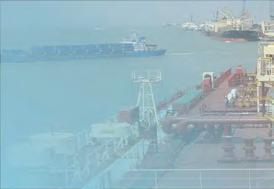

o Dry docking services
o Pre-vetting inspection/ TMSA audits preparation

Contact: +65-97265084
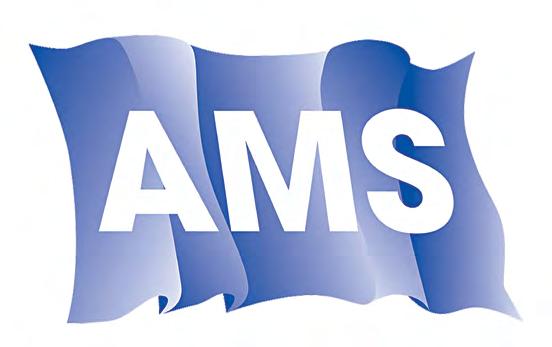


Change is inevitable; it remains the only constant (Smith, 2004). In today’s fast-paced world of technological advancement, transformation is happening in every aspect of our lives. To cope up with this speed of change is quite a challenging task for the global industry leaders. The amount of pressure, internal & external, is immense to meet organizational growth, justify shareholders’ investment by achieving high ROI and the last but not least is to survive in this highly volatile market, especially after the global economic meltdown of 2008 and falling oil prices thereafter.
There is a greater need from organisations to develop strategies to keep up with tomorrow, even if it includes changing the organisation culture. Although many might fight to hang on to the way things “used to be done,” others embrace the revolving door of change. Change is not the problem – but resistance to change can be a huge problem. In the 1920s, H.P. Lovecraft said “The oldest and strongest emotion of mankind is fear, and the oldest and strongest kind of fear is fear of the unknown.” This quote, said over 96 years ago, still holds true today when it comes to organizational culture change. Basic understanding and how to interpret the resistance is still challenging even though the concept is quite popular (Bareil, 2013).
It is unrealistic not to have any resistance to change, but the mitigations measure like effective management, understanding of individual interpretation, clear communication of the idea behind the idea of change has emerged as the essential skill for the change manager. The change situation will worsen if purpose of change is not communicated well to the individuals (I Palmer, R Dunford, G Akin, 2009, P162-64). With the help of this paper, writer has tried to explain how to identify different types of resistances, reasons behind these resistances and most importantly how to manage this resistance (Manuela, Clara, 2003).

Resistance to change is defined as “refusal to accept new ideas or changes” by the Longman dictionary of contemporary English (as cited in Bareil C, 2013). It’s a behavioural response of the change recipient or stake holders towards a change initiative which may emerge before, during or after change implementation. (Bareil, 2013). It is a main obstacle in the change management process. The basic assumptions, deep routed beliefs, individual attitude or perception and the present culture - these are the main reasons which cause resistance to change. These causes may delay the change process, increase the cost associated with the change process and at times can become the main cause of failure for these changes.

Human nature is to maintain status quo and this itself can act as restraint for basic idea of change. This is often taken negatively by any change leader as a direct objection towards the change. It’s all about the feeling towards the change. Feeling can be comfortable in form of enthusiasm or elated, but there can be a negative feeling in the form of anxiety, apprehension, fear. All these negative apprehensions, anxiety are self-made, just like an “psychological contract”, which we make ourselves and then start believing that things around us should be according to that belief.
Studies in the behavioural aspects define the resistance as “intentional acts of defiance or omission” (Ashforth and Mael, 1998, as cited in Piderit 2000). The behaviour response is the output in the form of act or deed of the individual about the change (I Palmer, R Dunford, G Akin, 2009, P50). According to Bareil, 2013, “the behavioural response can also be interpreted as a resource that represents the feedback of discomfort about the change initiative”. In the contrary the compliant behaviour of individual is interpreted as evidence of reduced resistance (Sagie, Elizur, Greenbaum,1995, as cited in Piderit 2000). It’s a natural
human behaviour to oppose any action or idea or plan which requires any additional amount of work/effort to be put without knowing the benefit or result. If a person is happy and content, he doesn’t want to go out of comfort zone unless he himself needs it or does it selflessly for someone else.
All changes are situational or need of time, but it always has one thing in the vision and that is betterment/profitability/survival of the organisation where the change is being planned. If a change process is not properly disseminated, discussed and explained by the change manager it can lead to distorted perceptions from all individuals/ departments to the extent of implicit assumptions. This sometimes leads to a negative impact of the change on one’s sphere of interest, often described as parochial self-interest by Kotter & Schlesinger (2008).
Other reasons like monetary involvement, motivation factor, past experience may also influence change. Market condition, timing of the year, unclear understanding of the need for change or the strategic intentions among the employees will surely reduce the creativity in change process, and hence will be the part of resistance. Basically when the expectations of the organisation and the employees are incompatible it gives rise to resistance. (Burnes, 2015)
Another important source of resistance is the change process itself. Maybe the idea and philosophy behind the change is very good but if the planning of execution is not done properly, then resistance develops. So it very important for the change managers to study the proposal of change in the full context of that particular organisation.
It is unrealistic to consider ways which can totally eliminate the resistance from any change process. Managing resistance tactfully is an important skill for the success of the change process.
Kotter and Schlesinger (as cited in Palmer, R Dunford, G Akin, 2009, P172) propose managing resistance by communicating and educating the people, to apprise them of the reason for change, involving them in the change process, encouraging participation, providing technical and emotional support to address anxiety and uncertainty, manipulation by offering key role to certain individuals thereby getting support when the change is absolutely necessary for the existence of organization.
In the traditional approach coercive methods, explicit and implicit coercion, are often used to persuade the change resistors when the resources are limited, and the survival of the organization is at stake. The concept of managing resistance has undergone significant transformation over years - from traditional suggestions of coercive methods, minimising and eliminating resistance to the modern theories of analysing, simplifying and utilizing the resistance to change. (Bareil, 2013). As per some modern theories, the resistance can be a resource rather than a threat (Ford et al, 2009) to the change process which can help to bring sometimes a commitment from the change recipient.
Scott and Jaffe,1989, (as cited in Palmer, R Dunford, G Akin, 2009, P173) suggested that individual goes through four psychological stages, denial, resistance, exploration and commitment as they respond to the organizational change. In the denial stage, individuals don’t tend to give enough importance or sort of ignore the requirement of the changes having the perception that the change is short lived and things will come back to the status quo. As the change progresses, fear, uncertainty and anxiety of future creeps in and thus causes resistance to the change. In the exploration stage, when the individual realizes that the change is here to stay, one starts to evaluate his own position, visualise the upcoming changed scenario and will try to modulate oneself to fit for the change. Once the individual realizes the benefits of change, they will enter in a commitment stage and focus on the change process. Going through all these four stages will bring about the positive approach and remove the negative thoughts for the change resistance. ▄
Over 5 billion people on the face of the Earth (70%) lack access to safe surgical and medical care. As a result more than 17 million people die each year. This statement alone explains why Mercy Ships exists.
By Kapil Berry Roll number 3381 Class of 1987Welcome to Mercy Ships, a compassionate response to a world where many have lost hope.

Adream that began in a young man’s heart has become reality — a big, white, state-of-the-art hospital ship that delivers hope and healing to people around the globe living in dire circumstances.
When Don Stephens, President & Founder of Mercy Ships found out that 95 of 100 largest cities of the world were port cities, and 50% of the world’s population lives within 160 kms of the coasts, the idea of delivering healthcare very efficiently to large numbers of people around the world was born. The birth of his profoundly disabled son also inspired him to move forward with his vision of a floating hospital. A visit with Mother Teresa in Calcutta, India, further deepened his commitment to serving the world’s neediest people.
It took years for this idea to reach fruition, but in 1978 Don’s goal became reality when he and fellow fundraisers paid USD1 million for the “Victoria”, a former cruise liner, and work began to convert her to a hospital ship. The nine-deck vessel was transformed into the hospital ship over a four-year period. In 1982, the vessel, refitted with three operating theatres, a dental clinic, X-Ray machine, a laboratory and a 40-bed ward, sailed as the “MV Anastasis” – the first Mercy Ship. The ship’s 350-member crew included Mercy Ships founders Don and Deyon Stephens, who lived on board the ship with their four young children for ten years.
Since then, four ships, including the current vessel, the Africa Mercy, have served in 150 ports throughout developing nations, bringing hope, relief and healing to the most vulnerable people.
Mercy Ships purchased the Norwegian coastal ferry “Polarlys” in 1994 and transformed it into the “Caribbean Mercy”, a hospital ship serving Central American and Caribbean ports.

In 1983, the Canadian ferry “Petite Forte” was donated to Mercy Ships to provide relief operations in the Caribbean. Initially christened the “Good Samaritan”, the ship was re-christened the “Island Mercy” in 1994.
Since 2000 Mercy Ships has the 16,500-ton flagship “Africa Mercy”, which measures almost 500 feet long.
“Global Mercy”, the world’s first purpose-built hospital ship, currently under construction, will grant the poorest of the poor access to highquality health care.
“Atlantic Mercy” will be delivered in 2019 with hospital area of abt. 7,000 m2 contains six operating rooms, an intensive care unit, clinical laboratory, diagnostic radiology, hospital supply and pharmacy services. The vessel is even equipped with a school and kindergarten for the staff’s children.
Mercy Ships now is a global charity that has operated hospital ships in developing nations, bringing hope and healing to the forgotten poor by mobilising people and resources worldwide, serving all people without regard for race, gender or religion.


In many developing countries in Africa, even basic medical care is a luxury. People are plagued by preventable disease, untreated illnesses and neglected injuries. Nearly 50 percent of the people have no access to a hospital or doctor. Children, teens, adults and the elderly suffer and die every day from curable or treatable causes. A staggering 6.6 million children under the age of five died in year 2012 alone, from treatable diseases – more than 18,000 children per day.
Mercy Ships has provided $1 billion worth of services, including nearly Hundred Thousand surgeries in more than 70 countries, directly benefiting nearly 2.7 million patients – no mean task for any organisation.
In order to do the good work to fulfil their mission, they depend on:
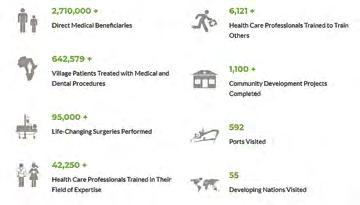
Volunteering Mercy Ships are all manned by volunteers. For example, the volunteer crew of the Africa Mercy is made up of more than 400 volunteers from more than 45 nations. Volunteers with Mercy Ships are responsible for paying all costs associated with their service, including crew fees, travel expenses, passports, immunizations, insurance and personal expenses. Volunteers are also need for their shore operations.
Mercy Ships offers short-term (two weeks to two years) and longterm (minimum two years) volunteer opportunities. There is a need for volunteers for both medical and non-medical jobs. Due to the nature of the ship, positions for surgeons, dentists, and nurses are often readily available, but jobs such as deckhands, carpenters, seamen, teachers, cooks, engineers, machinists, welders, plumbers, videographers, photographers, writers, electricians and agriculturalists are also available. Volunteer crew often serve as blood donors, since there is a high demand for donated blood due to limited space to maintain a blood bank on board.
Because of this commitment, Mercy Ships is able to use direct contributions from its supporters to bring hope and healing to the poorest of the poor.
Volunteering with Mercy Ships will not only change the lives of those you serve, it will change you. There are many ways to support Mercy Ships in our global medical mission to help the poor. It takes all kinds, with all skills. There is a need for both medical and non-medical volunteers. There are volunteer positions in a variety of areas including: housekeeping, galley, deck crew, doctors, engineers and nurses and everything in between.
You may find a role for yourself at https://www.mercyships.org.uk/ serve-onboard/volunteer/


Donations are required to keep their operations running. Donations can be sent by post, in person, direct debit, credit card etc. The donations can be made at following link https://www.mercyships.org.uk/ donate/
Fund Raising
Several fund-raising events are organized around the world to generate revenue.
Wills and Bequests
By remembering Mercy Ships in your Will, you can help save and transform the lives of future generations. Your bequest can help children and adults to see, walk or smile for the first time. You could even transform the lives of whole communities through one of our many development projects. Imagine funding a health clinic, safe water supply or a livestock or agricultural program for an entire village. For more info, use following link:
https://www.mercyships.org.uk/get-involved/give-in-your-will/
Corporate Social Responsibility and Philanthropy

If your company is considering partnering with Mercy Ships, Mercy Ships would love to hear from you. They will work closely with you to create a partnership that suits you and synchronises with your company’s Corporate Social Responsibilities.

Your support will enable them to continue our work in sub-Saharan Africa, providing free surgeries to people who otherwise couldn’t afford or access the care they desperately need. Your support will have a direct impact, transforming hundreds of lives.
Use following link for more info for Corporate donations: https://www.mercyships.org.uk/get-involved/philanthropy/
Spread the Message
Not many in shipping industry know about this amazing charity which should be close to any seafarer’s heart. So, spread the message, make people aware of the amazing work this organization is doing, and how every seafarer can and should contribute to it.
See their amazing at work at: https://www.youtube.com/ watch?v=vWL4MujgWRw ▄

ADITYA, being a catamaran, has high margin of stability. There are submerged bilge pumps installed in all water-tight compartments (ten of them) which will automatically start pumping out water when there is an ingress.
The grid cost is calculated by taking the cost of power from electricity bill of the shore charging facility. Since the power is utilized for jetty and office lighting, the amount of power consumed is taken from the energy meter in the boat. This is about 61% of the total consumption. A total of 13,030 units was consumed in the boat jetty of which 7,969 units was used by the boat (61%). At 11 US Cents, this comes to total energy cost of US$889 for the whole year.
Daily Propulsion Energy
In the first year, for 347 days of operation, the average consumption comes to 71.4 kWh. Once it is adjusted for 22 trips, the average consumption comes to 72.8 kWh per day. The low consumption are days with calm conditions whereas higher are days with adverse weather – current, wind, and waves.
Daily Solar Production
The daily solar power generation is tracked in the automatic log. It varies from extremely low value to maximum of 66 kWh.
By Sandith Thandasherry(Published in IEEE, 11/2018)
Story of ADITYA - first solar boat
Environment viability it wins hands down, but economic superiority is proven below with respect to a diesel ferry.
A typical ferry boat operating across the backwater in VaikomThavanakkadavu sector, a distance of 2.8 km, with ticket price of only 6 US Cents for the journey, generates about 71 US $ daily in revenue. However just energy cost of 100 ltrs of diesel was higher than this fig .The direct cost of energy and maintenance is 94US$/day along overhead and crew cost approx. 43$/day. Hence the opex is US$137/ day. This means US$137-US$71 = US$66 shortfall considering only opex.

It is not easy to find a solution, since existing ferry boats are heavy and with high drag, hence these cannot be retrofitted with solar-electric propulsion. Three things were needed to make solar ferry work. Firstly, the weight of the boat needed to be around 17 tonnes compared to 35 tonnes for typical diesel ferries. Secondly, along with weight reduction, the underwater shape was needed to be optimised to reduce the drag significantly so that just 20 kW motor power is needed to run at 6 knots with 75 people onboard. Thirdly, the power train, consisting of lithium
ADITYA is a catamaran ferry boat with GRP hull and aluminium superstructure build under IR class The vessel particulars are as follows:
Length overall 20.0 m
Breadth 7.0 m
Breadth, demi hull 1.5 m
Depth 1.6 m
Draft 0.8 m
Complement 75 passengers + 3 Crew
Maximum speed 7.5 knots (14 km/hr)
Solar panel Main System - 18 kW (poly-crystalline)
Auxiliary System - 2kW (poly-crystalline)
Batteries Main System - 2 x 25kWh (lithium-ionphosphate)
Auxiliary System - 2 x 5 kWh (lead-acid)
Motors AC induction 2 x 20kW (asynchornous)
Shore charging 2 x 6kW (32A three phase connection)
The battery system meets very high standards of safety, which is essential for public transportation.. The battery meets IP56 ingress protection and the ventilation system is designed for lifecycle at operating temperatures higher than 30 degrees by monitoring charge and air cooling by PLC.
The average daily solar production in the propulsion array (18 kW) is 42.8 kWh for the whole year. This include the three months of monsoon (Jun-Aug) where the average drops to 38 kWh. For an 18 kW system, the energy produced is lower than expected, around 60 kWh. This is because by the mid part of the lunch break on most days, the battery is full and in the second part of the break there is no space to store the energy from the sun at its peak power. This can be solved with a larger battery bank, say 80 kWh. There were few days with practically not much sun which mostly occurred during monsoon.
Daily Battery State of Charge (SOC) and the Grid
The battery size for ADITYA is designed for average sunny day. Hence in most days there is no need to charge the battery from shore during daytime. The real SOC is slightly more than the observed SOC.
Real SOC = (Observed SOC x 45 + 5) / 50
The lithium batteries are designed to go to SOC of 20%. If one sees the state of charge in the one year period, the average is 58%. This means that the battery will last longer, over seven years.
Economics CAPEX
This is the initial cost of owning the boat. The cost of ADITYA was US$278,600. A diesel ferry with similar capacity (75 persons) is about US$214,300.
In the total cost of operating the boat, there are three broad cost groups: (i) Energy; (ii) Maintenance, and (iii) Crew and overheads.
Energy Cost
For a solar ferry the energy cost is the cost of grid used to charge battery. The total energy consumption is 7,969 units and energy cost was US$889. This energy cost is expected to increase at 5% every year with increase in grid cost.
The fuel consumption is approx. 100ltrs/day. Daily cost US$86 that makes in a year total cost of US$30,000, where the diesel prices are volatile.
Maintenance Cost
There are three kind of maintenance activities. On an average the maintenance cost is about 3% for lube oil and 7% for filters and engine overhaul of fuel cost. The total is about US$8 per day. In the first year this was US$30,000.
The second type is the cost of replacing the battery cells. The propulsion battery has a warranty of five years. However based on the battery discharge level, the replacement cycle for the battery would be seven years. The replacement cost of the cells is expected to be US$35,700 at the current price
The third type is cost of replacing or repairing damaged parts, equipment and cost of maintaining the boat in good condition. It is assumed that this is similar in both boats and hence not considered.
Crew and Overheads
Both type of boats needs similar manpower so not considered for Comparison.
Finance Cost
The difference in Diesel and Solar Ferry’s intial cost is US$64,300.This Financing attracts interest which will be possible to pay in a period of 3 yrs, an amount of US$110,000. After which the solar ferry will give a huge saving every year.
TCO
Summarising the calculation, we can see that in its life cycle of twenty years, the TCO comparison is shown on Chart 1.
Conclusion
From the above calculations one can easily conclude that ADITYA solar ferry is far more economical than a diesel ferry. It is for this reason SWTD has ordered three more solar ferries for public transport. They have already announced plans to phase out all their diesel boats to solar in the next five years. ▄
The Union budget 2019 presented by the interim finance minister
Mr Piyush Goyal, the government proposed a number of tax sops to lure home buyers and also announced relief to real estate developers by extending a tax rebate on the development of affordable housing till the next fiscal. These measures are expected to boost the real estate sector across the country.
As always the Union Budget continues to grapple the nation’s attention, and almost everyone wants to know how it will impact them as well as other the real estate industry stakeholders the most important one being the homebuyers and the real estate developers. Here is a list of the key changes that the real estate sector can be excited about in Interim Budget -2019.


The levy of tax on notional rent, on unsold inventories has been increased from one year to two years, from the end of the year in which the project is completed. A recent reports mentions that currently there are about 6-7 lakh unsold units lying with real estate developers in top major cities due to poor demand. This proposal is expected to bring much-needed relief to such developers.
There is also a relief offered in the form of exemption of tax levied on income tax on notional rent on the second self-occupied house.
“Currently, income tax on notional rent is payable if one has more than one self-occupied house. Considering the difficulty of the middle class having to maintain families at two locations on account of their job, children’s education, care of parents etc. am proposing to exempt levy of income tax on notional rent on a second self-occupied house,” said Mr Piyush Goyal during his budget speech.

And if you are thinking what will happen if one owns 3 houses, if a person has three houses In that case only the third house will attract a rent tax considering that he/she lives in one house and two other are self-occupied properties. This will benefit most the consumers who would like to own multiple house and hence boost property sales.
The TDS threshold for deduction of tax on rent is proposed to be increased from INR 1,80,000 to INR 2,40,000 for providing relief to small taxpayers.
The budget offers breathing room for people who are planning to save on paying tax on the profit they get from selling off property. Those who get a neat profit of up to INR 2 crore from selling property can invest that money in not one but two properties to avoid paying capital gains tax (CGT). This is applicable only in some conditions and benefit taxpayers who have capital gains of up to INR 2 crores and under Section 54 of the Income Tax Act, the rollover benefit can be availed once in a lifetime.availed once in the lifetime This will incentivise and lure many individuals to purchase more than one house, thus boosting the real estate sales.
In order to boost the affordable housing sector in India, an additional tax benefit for affordable housing developers was also proposed by the government in its interim budget. “For making more homes available under affordable housing, the benefits under Section 80-IBA of the Income Tax Act is being extended for one more year to the housing projects approved till March 31, 2020,” said Goyal during his budget speech.This essentially means that projects under Section 80-IBA will offer 100 per cent deduction of profits to an assesse engaged in developing affordable housing projects.
While there have been many big positive announcements for real estate industry in this Interim budget what has been a big miss is the much expected GST relief on the purchase of property. The industry players were keenly looking forward to this announcement from this budget as the experts were expecting that the GST relief would have helped boost the subdued sentiments in the real estate industry and would have helped to push up the real estate sales. ▄
world first autonomous projects. However, this project, a world first for the deployment of autonomous navigational technology to an oceangoing vessel for commercial operations, pushes the boundaries of autonomous technology and moves the industry towards deployment of autonomous navigation systems onboard vessels for enhanced performance and critically, safety.

Increasing interest in maritime autonomy and remote access/control technologies is a specific example of larger technological changes we are currently seeing in the maritime industry. Essential to the successful and safe adoption of these technologies is that robust use cases are established, for example to improve navigational safety, supply chain efficiency or operational costs of marine assets. Autonomous systems will also provide opportunities for skilled seafarers to focus on what they do best, and the safe and sustainable integration of autonomous systems relies on the appropriate engagement with seafaring professionals.
The case for autonomous ships keeps getting stronger as evidence of its commercial viability increases especially from the safety dimension, with the sensors on board to provide greater situational awareness. It will also help to meet future requirements for CO 2 emissions.
By Brijesh TewariLloyd’s Register
Roll Number 3275
Class of 1986
While autonomous shipping is a hot topic today, most of us believe that it is a thing of the future and we don’t have to do anything with it.
Well, you will be pleasantly surprised to know that our own DMET Singapore alumni Chinmoy Ghosh is deep into it and was recently featured in Channel News Asia. Please see Picture 1.

A Memorandum of Understanding (MoU) has been signed between ST Engineering Electronics Ltd. (STEE), a leading Information Communications Technologies (ICT) provider and co-creator of Smart City Solutions, and Mitsui & Co., Ltd (Mitsui), the second largest trading house in Japan to collaborate on the ‘Development of Ocean-going Autonomous Navigation System on a Marine Asset’. The MoU forms the foundation of the MPA-funded ‘World’s Largest Ocean-Going Autonomous Vessel Programme’.
Chinmoy Ghose represents the ship-owner Mitsui.
Lloyd’s Register’s involvement in this project builds on the capability and experience already gained from previous industry-leading and
Autonomous vessels may account for up to 17% of global shipping by 2040 according to a recent World Maritime University study but some sectors are likely to embrace it sooner than others.


Short sea shipping where vessels move back and forth on the same route, road ferry types, are candidates for early adoption, but deep-sea going vessels too are coming into the picture.
For that international regulations and standards must be in place. The International Maritime Organization is taking steps but more needs to be done as standardization is needed to allow autonomous ships to cross international waters.
LR has developed framework for autonomous shipping as per Figure
1 which allows for increasingly complex systems to be integrated on board ships.
LR has also published a Code for Unmanned Ships which creates a whole-platform certification process. The salient features of the code are as follows:

• A ddresses when vessels are manned as well as unmanned
• Go al-based approach to assess risks for providing assurance to platform
• Consider s more than just autonomous/robotic system of an asset
• Provides certification process for unmanned assets
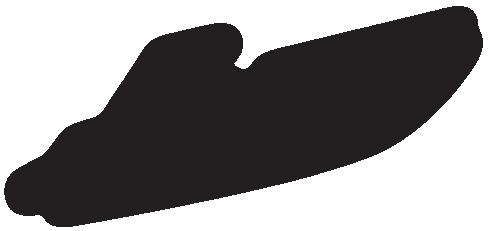
• Applic able to all UMS operated on or below the surface
• If occ asionally manned all relevant conventions must also be complied with
• T he code covers following elements – Structures, Stability, Control Systems, Electrical Systems, Navigation Systems, Propulsion and Manoeuvring, Fire, Auxiliary Systems
We can look forward to the day when the Master and Chief Engineer will be navigating the vessel from the comfort of their office ashore, but am sure most of us will miss the days when we used to be at sea in our own world as king in our own kingdom with no interference from ashore!! ▄

Most shipping companies have a training department or have tied up with a training institute to fulfil training requirements as per their training matrix (a mandatory requirement of TMSA).
But we hardly come across competency management solutions being implemented by shipping companies or their crewing arms. Although class societies have laid out standards for competency management systems for shipping companies and had also implemented their sea skills program in some shipping companies. Currently very few, if any, shipping companies seem inclined to invest in a separate department for competency management solutions.

The root cause of this apathy is ignorance, regarding the usefulness of such a department besides of course commercial considerations such as a very dynamic and unpredictable crewing job market and manning functions, where additional barriers are never welcome.

To understand the need, first we need to have clarity regarding the term “competence” vis a vis “training”.

Training is about enabling acquisition of skill and not simply knowledge. However, a trained person need not necessarily be a competent person. Competence is the ability to demonstrate use of knowledge, skills and attitude to achieve results which are the objectives of a job.
Under class room conditions, or a training environment which enables practice of techniques, a person may have acquired the necessary skills, but he may fail to demonstrate same at the actual workplace where these skills need to be applied. This can be due to several factors which affects his ability to produce results required of a job.
So, it is obvious that a trained person need not necessarily be a competent person!
Training can be a combination of theory and practice, taught courses, on job training etc. However, competency has several aspects, of which training may be only one. Other aspects can be skills, pre-existing knowledge, experience, aptitude, attitude, understanding of job objectives, surrounding environment, wide array of human factors etc.
So, qualifications accrued from training does not necessarily guarantee competence. Inherent aptitude, experience, intuition etc. all singly or in combination can ensure achievement of objectives of a job.
Now the question arises, how does one ensure competence? To be able to answer this question, one must first ascertain the expectations or objectives of a job role or function. Surely, this will require a review of job descriptions, responsibilities and roles as also minimum standards such as industry best practices and required training/certification.
For high risk jobs like in maritime industry, higher competency is required due to the degree of complexity and expertise, besides of course the degree of risk.
Once the core needs of the job have been identified in terms of experience, certifications, qualifications, skills etc., one can easily develop a matrix which would still be a basic or elementary matrix, in which minimum requirements have been identified.

Now comes the real challenge of aligning people against proposed roles and evaluating or assessing their existing competencies to carry out such alignment. This would give a scientific way of gaining an insight into strengths and weaknesses of employees including prospective ones. Further, this would streamline efforts to plug the identified weaknesses and make such efforts more organised.
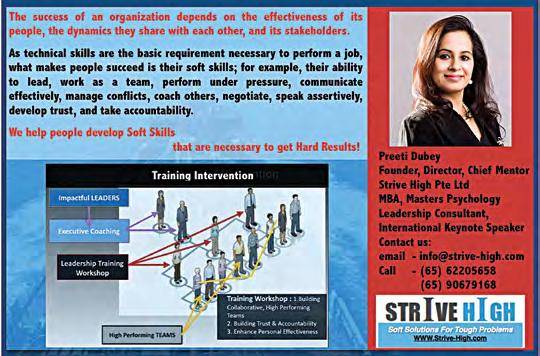
Such efforts can be in the form of more training in theory or practice or both followed by re-evaluating competencies through evaluations, assessments, performance reviews etc. This can be followed by planned learning, training and development programs. The best part is competence evaluations or assessments against well laid out standards also gives an opportunity to improve quality of training or learning programs since they provide us with a measure of training effectiveness!
Many argue that in the context of seafarer’s training and certification, assessments of seafarers form the basis upon which they are granted a COC (certificate of competency) for particular roles and responsibilities, thus licensing them to operate and maintain a vessel and its equipment. Then why duplicate the exercise at the recruitment stage of different companies?
But we are all aware that accidents on and involving ships have often resulted in loss of life or limb and damage to marine environment. Analysis of these accidents and incidents have proved conclusively that major percentage of such accidents can be attributed to human error Operational mistakes and errors by ship’s crew have negatively affected all stakeholders in maritime industry, besides of course taking toll on human life and limb and marine environment. This clearly points to the fact that seafarers’ competence levels have been far from that required to operate ships safely and efficiently. Assessment methods used prior issuing COC’s are hence not reliable. And that further points to inadequacy of STCW standards that are used by administrations and training institutes to certify, train and re-train! In a fast changing regulatory regime and engineering developments, standards like STCW, are bound to get obsolete by the time they are released, leave alone implemented!
So, what’s the way out? The maritime training institutes are powerless to improve STCW. IMO works at its own pace in formulating and releasing these standards. And administrations are bound by these standards to assess and issue COC’s which eventually end up being just qualifications with no guarantee of competence! Scenario seems quite hopeless, doesn’t it?
But no problem comes without a solution! Competency management solutions tailor-made to keep pace with changing technology and rapidly evolving regulatory regime can be one way out. There is no dearth of experts in maritime industry who can develop customised solutions. Class societies as knowledge management bodies (besides their usual role as recognised organisations and certifying bodies) can contribute in a big way! Learning from incidents can be used way to ensure that training provided to seafarers gets actually translated in terms of competence. Large ship management and ownerships companies with their vast cumulative knowledge acquired from day to day operational challenges, incidents, accidents et al can add to this knowledge base to improve training standards and facilitate evolution of training from just a commercially gainful exercise or fulfilment of regulatory and third-party requirements to one that actually enhances competence of ship’s crew. Easier said than done, surely! But a change in mindset is the need of the hour to make a start in this direction. That will be moving beyond lip service regarding commitment to quality and safety that is often indulged in by business leaders, owners, ship managers, and operators in maritime industry. ▄
In 2003 travelled to New Zealand with my wife Harinder Kaur in search of a new vocation, career or business opportunity. While travelling in New Zealand we were overwhelmed by the boating culture there and we conceived a thought that “It may take 10 yrs for a culture or industry like this to develop in India and it will also take around the same time for us to master the technology and art of boat building”. This was our one-line business plan and thus started our journey. we spent almost a year in New Zealand visiting various yards, colleges and libraries doing our RND.
Back home in India in 2004 we started making small prototypes of canoes and sailboats, sailed for the next two years to fund the prototypes, in 2007 we launched our company Viking Boats at the first ever International boat show held in Mumbai, where we displayed a 30ft sailing catamaran designed by a renowned British Naval Architect, Mr James Wharram.
We got our first order for a 38ft Sailing catamaran of wharram designs and embarked on our commercial journey. In 2008 following the terrorist attacks in Mumbai the ISPS norms for High speed Security boats in Ports and Offshore installations were enforced. We diversified into this segment of High speed FRP craft and in the years that followed we built and supplied FRP Pilot and Patrol boats to various major and minor ports in India, ranging in lengths from 14 to 16 meters.
In 2011 we formed a Pvt Ltd firm and named the business Inspiration Marine. It has majorly been a product lead business development where we have had to design, develop and build products to cater various segments without any initial benchmarks. Amongst the segments that we have serviced are the commercial applications for ports, passenger transport ferries and the private segment for speedboats and sailing Yachts. As we crossed the ten-year mark, we are glad to have achieved the boat building benchmarks in terms of size and types of boats built and also to have contributed to the developing boating industry in our country. The journey so far has been both interesting and challenging, it continues to be so as we explore and venture into new opportunities and segments.
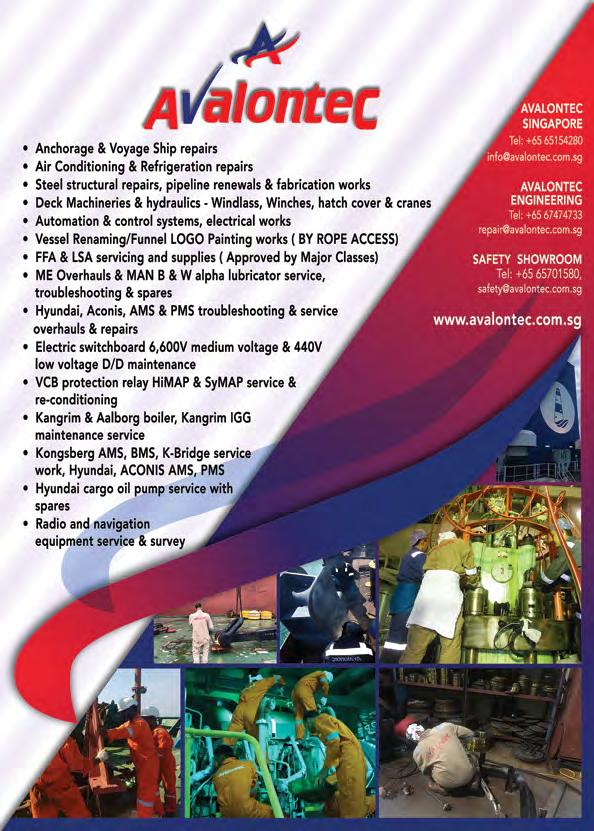

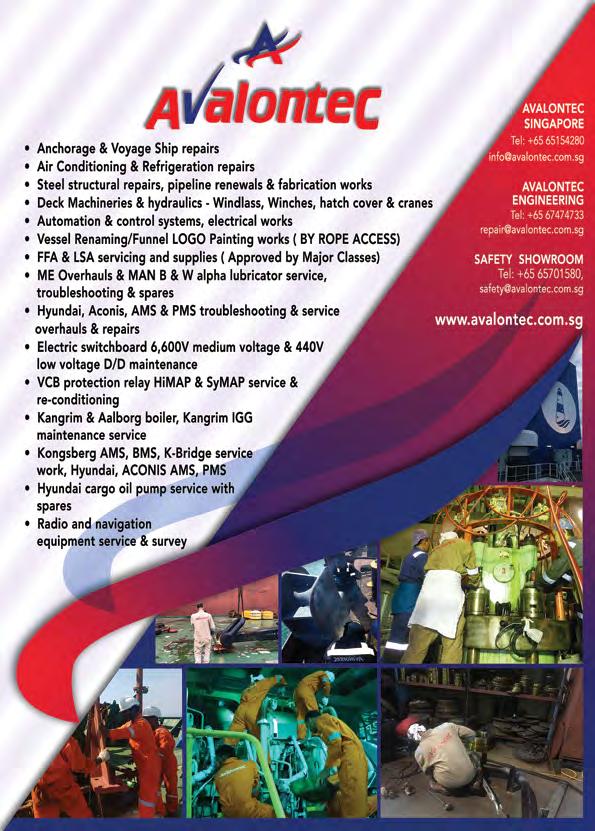
The Boat Building Process starts with identifying the right product to cater to the end application.
We then liaise with our Partner Naval Architect firms and develop the design as per the class rules and or statutory/regulatory requirements.
Once the designs are approved we move on to the shop floor where the following steps follow.
By Rajesh Desai Roll number 4231 Class of 1995

The plug is a temporary structure built to the exact shape and dimensions of the final boat. It has a one-time application for making the Female mould of the boat.
For bigger boats, the plugs are made with a combination of wood and plywood, for smaller boats, and with the application of modern technologies, it is built with Styrofoam cut out with CNC machines.
The process of building the wooden plug is as follows - The frames which represent the shape of the boats at various lengths or stations are lofted (drawn on a flat surface) from the Offset tables. The actual frames are then cut in wood or plywood, once all the frames are ready they are erected on a uniform and levelled bed. The erected frames are then aligned and wooden batons are run along the length of the plug tying the frames together. The Batons are then planked with plywood or MDF boards thus creating the shape of the boats. The surface is then faired & painted to get a mirror finish.
The Mould which has a female shape of the boat is the tooling in which the final boat gets laminated. The Plug is coated with a release agent which ensures that once the mould lamination is complete it can be released clear of the mould and does not stick to the mould. The mould is then laminated over the Plug. The lamination process is similar to the boat hull lamination process explained below. Once the lamination is complete the mould is released and mounted on a suitable frame or cradle which allows it to be transported easily within the work space. The inner surface is buffed and polished to get the mirror finish. The final boat finish is decided by the level of finish of the mould.
FRP/ GRP stands for Fibre or Glass Reinforced Plastic. where the layers glass fibres are laminated in boat grade resins to create a light weight composite structures, the design includes a laminate schedule configured to achieve the strength properties desired in the Boats Hull. The laminate schedule gives the sequence and number of layers to be laminated, thickness and pattern of each layer. The glass fibres are available in a wide range of thicknesses and patterns to choose from.
For achieving further light weight characteristics a foam or Balsa wood is used as core material. This mainly has application in superstructures and light weight hulls used in crafts above 30 knots. Further there are two main methods of lamination, first there is hand lay up where the layers of glass fibres are laid in the mould and resin is applied directly on the glass fibres and worked in to it using rollers. The second method
which is mandatory with foam core is vacuum bagging, where the layers of Glass fibres and core as per the laminate schedule are laid in the mould, they are then covered with a plastic enclosure and vacuum is created within the enclosure. Once the required vacuum is achieved the resin is infused through feeder tubes at various locations of the mould. In this method the vacuum ensures a uniform distribution of resin within the layers.
Once all the layers as per the laminate schedule are completed the hull is released from the mould. The superstructure is also made in similar steps from 1 to 3. The hull and superstructure are then laminated together.
The boat is now ready for fitting out all the machinery and accessories
as per the specifications. The propulsion systems commonly used are petrol outboard motors for smaller boats and inboard diesel engines for bigger boats. For Sail boats the mast, rigging and sails have to be procured separately as per the design requirements.









The standard set of tests and trials are conducted on the boats and upon successful completion the boats are ready for delivery.

would like to take the opportunity to thank my batchmates who have encouraged and supported my journey. My best wishes to the readers and members of our fraternity in their journeys towards a fulfilling life. BON
Roll No. 3400; Class of 1987
Demand volumes increase from D1 to D4. Between D1 to D3 there is a relatively small rise in the market freight rate and a large rise in tonne miles produced. But between D3 and D4, the increase in demand is translated into large increases in rates, because supply becomes very
inelastic, and the scope for increases in supply becomes increasingly limited.
The above model can be used to examine short run fluctuations in market conditions, but not long run ones. This is because the supply schedule represented in Figure 1 is drawn for a given stock of ships. It is a useful framework to explore fluctuations in freight rates in the short term however.
Consider the shift in demand from D3 to D4. Rates move up very sharply, and supply does not increase much. This creates large profits for existing shipowners, who will be encouraged to order new vessels. The value of existing vessels will also rise, reflecting the markets’ expectation that profits are going to be healthy in the future. The increased number of orders will translate into a rightward shift in the supply curve in the long term, and this will lead, to a fall in rates if demand remains at D4.
On the other hand, a fall in demand from D2 to D1 means a fall in supply and a rise in vessel lay-ups. Remember that in the short run, some vessels will be trading at rates which do not cover their full costs. While this is acceptable in the short term, it is not the case in the longer term. Some vessels will be laid up, or scrapped. The scrapping of vessels leads to a leftwards shift of the supply curve. This process will help raise rates if the supply shifts far enough.
Given in the later part of this article are various scenarios and examples with brief comments. hope you will find them useful now and in future as reference material.
The Y-axis scale is both for the number of days (columns) for the port delays and in terms of percentage for the fleet tie up (line).
See the effect of port delays (in days) in the East Australian ports on the percentage of total fleet tie up due to congestion., this much percentage of fleet is then out of circulation, resulting in virtual tightening of supply for a given demand.
By Jagmeet Makkar Roll number 2429 Class of 1981
An interaction of supply and demand determines the market and the resultant price of the product and/or service. Since demand for shipping is a “derived demand”, it is generally inelastic. For example, if a coking coal cargo has to be lifted for a steel plant and a contract is in place, the demand for shipping capacity (ship) is inelastic irrespective of price (freight or hire). In the diagram below, different interactions of demand and supply and resulting freight are depicted. We call this equilibrium state in “short run” and depends upon the supply of ships and demand for ships due to cargoes based on local conditions and without taking into account medium & long- term factors.
The effect of port congestion is to tie up the ships in the ports. This means that less tonnage is available to carry new cargo stems and thus a shortterm shortage is created.

This article is only for academic use, providing an understanding of the Supply and Demand Models and resultant freight equilibrium. Data used is old, thus no assumptions about today’s freight market is to be made.
In cases of demand surges, when the port infrastructure is unable to cope up with the cargo handling requirements, this phenomenon occurs.
In general, and in most cases, we can see in the accompanying graph, the sharp increase in the charter hire is experienced when the percentage of fleet tied up in port increases. The X-axis data is from Jan 02 to July 05 on quarterly basis i.e. each column and line represents the average of previous three months.
Steep rise in the freight rates is shown in this model (for the same demand) due to port congestion. Recall and note from above graph, the levels to which charter hire rose to in 2004 and early 2005 due to this factor.
The effect of scrapping is similar to above but on a reduced level and spread over a period (assuming not all vessels scrapped in the year would be taken to the scrap yards in a very short period, say in a month), on a like to like basis. However, if the new supply delivery is tight (not much tonnage pouring into the market) from the shipyards, effect of scrapping is comparatively more lasting than the virtual shortage caused by port congestion. In recent times, the scrapping levels are very low, thus this factor is of academic value only at this point of time.
The impact of scrapping is shown as increase in the freight rates for the same demand (provided the net effect of new deliveries and scrapping is still negative in terms of fleet growth). If more ships are being delivered as compared to tonnage scrapped, logically the effect will be reversed for the same demand.
Effect of increase in tonnage entering the market is to increase the elasticity of supply. This means that more ships are available for a given demand and come into service to cater for this demand. The supply curve shifts to the right.
The effect is thus a fall in the freight rates for the same demand. Unless the demand level increases (either in absolute terms or by virtue of change in trading patterns i.e. increase in tonne-miles), the induction of new ships will depress the market.
This is an extension of above, where a rush for ordering new ships in a good market results in heavy deliveries in near future. This then causes a sort of crash. Recall early 80’s, late 90’s and 2001!
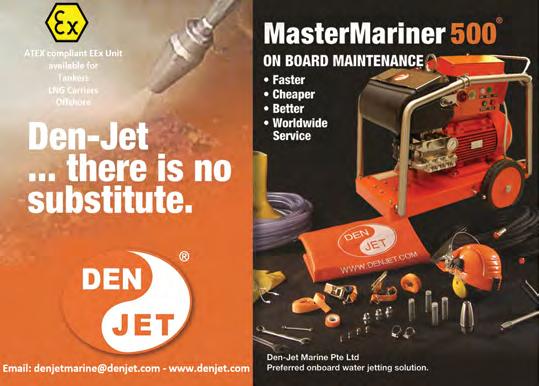


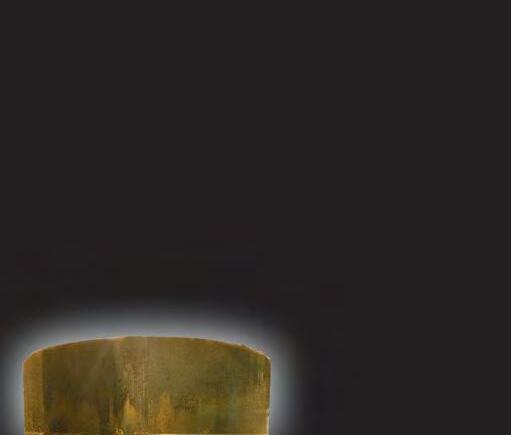








1956 - 1973 Very Fast
When the freight market is good, a perception (an illusion in most cases) that it is going to last forever injects optimism in the minds of bankers and investors (recently the IPOs with tons of retail investor funds). The result is heavy ordering and an inevitable crash, unless of course demand keeps up with this increased supply, both fundamentally or by way of nonfundamental factors. Following table
We can see that it is the interaction of the supply and demand that produces the resultant called the “market tone” or the trend of the “freight rates”. Even during the period when the demand tendency was fast, the market tone was either competitive or weak because of expanding or over capacity in the supply.
What does the future hold with a large number of Capes, Panamaxes, Supramaxes and


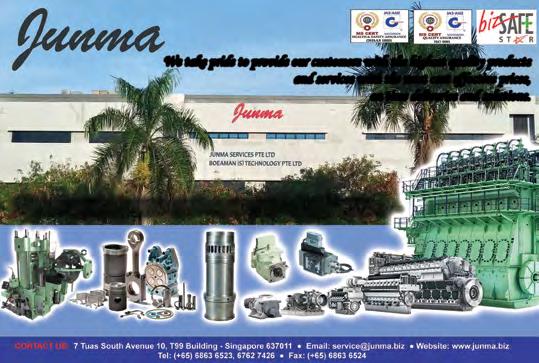
This graph is adapted from Clarkson Intelligence Weekly 509 dated 1st March 2002. An excellent piece of analysis which to my mind can be termed as the “writing on the wall” seen as early as March 2002. As foreseen then, the market experienced a boom most of the times when the new deliveries fell below 3% of the total fleet. For bulkers, this percentage was 2% for the year 2003. We all know what happened then in 2003 to early 2005, coupled with a surge of demand from China and resulting multiplying impact of port congestion!
This is a good example of the interaction between Supply and Demand. The graph shows some offset (out of phase) between the change over (intersects) and the actual boom points. Further the future projection shown is only an opinion and not a statement of fact.
Please note how the BDI (an index of dry bulk market) has moved over the years since 1985 and compare this graph with the superimposed curved line. Does it not remind us of the basic model given right on top of this article! ▄
Class of 1968
Risk Based Inspection (RBI) is an Optimal maintenance business process used to examine equipment such as pressure vessels, heat exchangers and piping in industrial plants. It examines the Health, Safety and Environment (HSE) and business risk of ‘active’ and ‘potential’ Damage Mechanisms (DMs) to assess and rank failure probability and consequence. This ranking is used to optimize inspection intervals based on site-acceptable risk levels and operating limits, while mitigating risks as appropriate. RBI analysis can be qualitative, quantitative or semi-quantitative in nature.
Risk-Based Inspection (RBI) is an analysis methodology and process that, as opposed to condition-based inspection, requires qualitative or quantitative assessment of the probability of failure (PoF) and the consequence of failure (CoF) associated with each equipment item, piping circuits included, in a particular process unit. A properly-implemented RBI program categorizes individual pieces of equipment by their risks and prioritizes inspection efforts based on this categorization.
RBI is used to identify and understand risk, risk drivers, and where equipment is in its lifecycle. RBI can indicate whether inspection is needed; however this requires additional data that is extremely targeted to reduce the underlying uncertainties associated with the risks about the current and future predicted damage state of the equipment. RBI should not be used to recommend any inspection when it will not improve knowledge about the damage state. In those cases, where PoF is driving the risk, RBI should point to other mitigation options such as replacement, repair, or other actions that satisfy the risk criteria.
RBI can be used to prioritize inspection-related activities, usually by means of nondestructive examination (NDE), in order to reduce
the uncertainties around the true damage state of the equipment and the dynamics leading to such. The resulting inspection plan may outline the type and scheduling of inspection for an asset.
Consistency and repeatability of analysis are critical to producing an effective RBI program, as RBI is based on relative risks. Caution should be used when mixing RBI platforms (e.g., using a qualitative method to perform the initial screening and quantitative methods to conduct the final analysis). Complementary methodologies must be calibrated against one another to ensure valid cut sets are achieved.
The essential idea was (and continues to be) designing an inspection program which manages the risk of equipment failures. Three major goals have been identified:
1. De fine, quantify and rank the risk of process equipment failure to target the most important elements in a process plant
2. Giv e the ability to review safety, environmental, and businessinterruption risks in an integrated, cost-effective manner
3. S ystematically reduce the likelihood and consequence of failure by allocating inspection resources to high risk equipment
There are two dimensions to a risk matrix. The combination of probability and severity will give any event a place on a risk matrix. See figure 1.
RBI emphasises the benefits of inspecting specific areas of the process plant. It is known that a large percentage of the total unit risk will be concentrated in a relatively small percent of the equipment’s So, from all equipment items that are competing for attention, the idea is to review the inspection plan focusing on those components with the highest risk. As the process plant changes with on-going operations, inspection priorities and frequencies will be guided by the RBI process.
In 2016, RBI application boundary was extended to fixed equipment in refining, petrochemical, chemical process plants and oil and gas production facilities. This includes specific assets such as pressurized fixed equipment including pressure vessel, piping, tanks, pressure relief devices (PRDs), and heat exchanger tube bundles.
Classification societies like DNV-GL, Lloyds, ABS etc have developed their own SOFTWAREs for implementation of RBI commencing from Risk analysis.
The concept of inspection effectiveness is introduced as part of the risk management process. As damage accumulates during in-service operation, risk increases which then should trigger an inspection activity of enough effectiveness.
Methodology used by DNV-GL Risk: POF x COF
In mathematical terms, the risk for a scenario s is: R s = F s x C s where, s - scenario number; Fs - failure frequency (per year) for scenario s; C s - consquence (area in m 2 PLL, or cost) for scenario s.
CoF can be expressed in terms of the environmental/safety consequence effects and the economic effects. PoF is the product of the Generic Failure Frequency (GFF), statistical frequency of failure for a given equipment item and the damage factor (DF).
Figure 3 illustrates the process of determining the next inspection date and the inspection effectiveness. A maximum acceptable risk level is set by the user. A future evaluation date is then selected by the user, it is typically the date of the 2nd turnaround, and the risk is calculated as a function of time.
If the risk at the future evaluation date exceeds the maximum acceptable level, an inspection is suggested. The intersection of the risk curve and the maximum acceptable line sets the next inspection date.
Inspection includes all damage mechanisms and risk factors, predicts corrosion, plans inspections and manages anomaly and follow-up maintenance activities. In addition, schedules and work packages are also considered taking into account the operational impact.
The plan-do-check-act (PDCA) engineering cycle is most common system being used for inspection process. See Figure 4.
Inspections typically employ non-destructive testing (NDT).
Items with high probability and high consequence (i.e. high risk) are given a higher priority for inspection than items that are high probability but for which failure has low consequences. This strategy allows for a rational investment of inspection resources.
RBI assists a company to select cost effective and appropriate maintenance and inspection tasks and techniques, to minimize efforts and cost, to shift from a reactive to a proactive maintenance regime, to produce an Auditable System to give an agreed “operating window”, and to implement a Risk Management tool.
The purposes of RBI include:
1. To improve risk management results
2. To provide a holistic, interdependent approach for managing risks

3. To apply a strategy of doing what is needed for safeguarding integrity and improving reliability and availability of the asset by planning and executing those inspections that are needed
4. To reduce inspections and shutdowns and provide longer run length without compromising safety or reliability
5. To safeguard integrity
6. To reduce the risk of failures
7. To increase plant availability and reduce unplanned outages
8. To provide a flexible technique able to continuously improve and adopt to changing risks
9. To ensure inspection techniques and methods consider potential failure modes


International engineering standards and recommended practices outline requirements, methodologies and the implementation of RBI.

• API 58 0 Risk-Based Inspection - Recommended Practice (Third edition, February 2016)
• EEMU A 159 Chapter 17 RBI methodology for aboveground storage tanks
• A SME PCC-3 Inspection Planning Using Risk-Based Methods


• API 58 1 Risk Based Inspection Methodology - Recommended Practice (Third edition, April 2016)
• DNV-RP G101 Risk Based Inspection Of Offshore Topsides Static Mechanical Equipment





• API 5 71 Damage Mechanisms Affecting Fixed Equipment in the Refining Industry
Hindrances to application of RBI on board vessels like Large Oil Tankers; Gas Carriers are availability of reliable and accurate DATA to carryout Risk Analysis. Ship board situation fluctuates with loading condition of the vessel and weather condition during the voyage. Accurate Data of these variables are difficult to achieve, causing uncertainty of RBI report.
Classification Societies need to explore the application of RBI for Ocean Going Vessels, specially Oil Tankers, Gas Tankers to enhance Safety, to Reduce Maintenance/Inspection costs and to Reduce financial loss arising out of sudden failure of a facility. ▄



1. Inspection and Testing
• Fuel Oil Analysis
• Peace of Mind Packages
• Lube Oil Analysis
• Cylinder Oil Drain analysis
• Grease Test
• Water Analysis

• BQS / ROB / Sludge / ON & OFF Hire / Cargo Surveys
• Viswa Energy Efficiency Management System

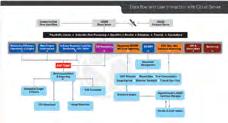
• Hull & Propeller Condition Monitoring
• Vessel & Voyage Performance
• Fuel Consumption Prediction
• Charter Party Condition Monitoring

• SEEMP and EEOI Monitoring
3. E Log Books (Deck, Engine, ORB, Ballast)
• Technical / Operations
• Conditional Assessment
• Total Fuel Management

• Condition Monitoring
• Maintenance Optimization
• CLO / L-Wear Optimization
• Failure Analysis
• IHM Surveys
• Computational Fluid dynamics.
5. Abatement Technology

• Viswa Horizontal Scrubbers

• Easy retrofit & Flexible design based on space availability
• Low immobilization time – installation time
2-4 weeks
• Easy maintenance – Access to scrubber is easy
• High Dust / particle handling capacity




“ My head hurts” said Bikki - my boy had turned six earlier this month. Sitting inside a camp few meters away from Pangong Tso, felt a sense of persistent anxiety. I tried to recollect all that had read and gathered before I came for this trip, looking for ways to alleviate his pain. The reason we had put away this trip for four years was staring back at me now. Perhaps this was too early, I felt deeply guilty. What happens if this only increases? How far do I have to travel if need to reach a medical facility? Should I administer oxygen from a can? How many times? The little fellow was struggling to adjust to the lack of oxygen in the air. The sub-zero temperature outside and the howling winds only compounded the problems.
I rummaged through the medicine kit to give him all that was recommended. He fell asleep quickly. The drive from Leh had worn him down. My 10-year-old-son, Ahaan, was reading his book nearby, he didn’t look ill, but wasn’t energetic and sprightly either. gave him some preventive medicines, already in total panic mode. Was it okay for one to sleep right after the medicines? asked myself, sifting through my brains to recollect what had read, and came up with nothing. Google had officially stopped working from Leh airport. There was absolutely no data services anywhere in Ladakh, no voice either. I did not know if I should let him sleep or wake him up, but I instinctively choose to let him rest and stepped out of the camp, partly because needed to clear my head and party because the unseen, unruly breeze was taking shape


of a persistent young adolescent, out drunk, one festive evening. walked towards the lake which looked like a massive blue jewel to me - the wind and the mist combined to create a most surreal play on the water. Waves crashed on the rocky beach, the multicolored mountain ranges on the other side seemed full of mystery and stories. No one knew what lies there…I told myself. walked by a now deserted coastline, rocky but pristine and so deeply meditative that I was tempted to wander off despite the breathlessness and a restless little boy at the camp nearby.
A few photographers were wrapping up their gear, mine however was just getting started. The low light and the ‘golden hour’ are Saurabh’s favorite time for shoots. I saw him remove his jacket and gloves impatiently to point the camera at the distant horizon where could not see anything. The light dimmed further and he started working faster. These were his ideal conditions - the cold fueled him, the vast emptiness surrounding us helped him think and compose, the failing light gave his work a magical silence that is both unique and refreshing. sat afar observing him, obsessed with his craft and in a place far away, discovering new limits and building new stories.
The place induces a restful lull…by now am a little less worried about acclimatization and headaches and food choices for dinner.
I found it hard to look away from the lapping waves at my feet and looked at the distant. told myself will miss the dramatic expanse of multicolored mountain ranges, but by now have made friends with that persistent young adolescent wind and his equally charming love – the tempestuous waves.
The morning after was bathed in golden sunlight – the sky was dotted with playful clouds and the bitter chill of the night swept away by the glorious sun. We spent hours by the lake, stacking pebbles and chucking them in the lake.
Ahaan and Bikki found a pair of cute horses to ride along the lake completely overwhelmed by the beauty all around them.
We avoided those “Three Idiots” inspired props that had made its way to the lakeside and walked by the coastline following soaring seagulls till we found some very gentle Yaks, by the lake, decorated in Ladakhi gear, waiting to ferry tourists around. The boys fell instantly in love with these gentle beasts. Bikki had forgotten his headache and they fussed around these mighty creatures like they were puppies in our backyard.
These unexpected bondings have a way of nudging itself into our hearts and staying there forever. From the look of it the boys were going to remember Chotu and Rancho, for a long time to come.
My ten-year-old son, Ahaan had read some books on Ladakh before we came for the trip. While we were focused on preparing ourselves for medical exigencies, packing the right gear, he spent all his time researching about wildlife and birds of Ladakh.
On top of the list, was the majestic black necked crane. In India, this bird is found only in Ladakh around marshy wetlands, although there have been some sightings in Arunachal Pradesh. Sadly, only a handful of them remain now. Some say in Ladakh, the population is less than 50 around this time of the year, mainly because loss and degradation of habitat, feral dogs and the fact that they only have one egg or two has seriously affected the population. A sighting in Pangong Tso was most probable, Ahaan told us. He had stayed up, looking out of the window throughout the journey. He wanted us to hire a bird watching camp and get up at 4 am to try and track them by the lake. We couldn’t find a bird watching camp for hire and 4 am in the morning was dark, dangerous and so cold that we couldn’t bear to step out of the camp. As we drove towards Leh, without seeing one, he seemed entirely dejected. Perhaps in our next trip, we consoled, but chances are the bird will get even more rare then, he told us quietly as his nose touched the floor of the car. We couldn’t argue with that. ▄

jobs carried out on the ship are recorded and advance-planning done for the jobs would make the difference in operating the vessel cost effectively or not. While there are softwares and computerized systems available, the onus still lies on the ship staff to effectively use this and for the superintendents to ensure that this is done. Collection of clean data is the first part and analysis of the data onboard as well as by the superintendent is necessary to capture the critical points of a ship and addressing the root cause to avoid delays/ off-hires and incidents.
Resource Management is something that we all have learnt while we were onboard. The resources both in terms of manpower as well as the material used to be limited and the type of problems and emergencies unlimited, but still we used to manage and solve the impossibles many a time. The concept remains the same – using the limited budget and utilizing this to make the best of it is an art that needs to be learnt, practiced and perfected over a period of time. It is important to understand the role that the shore team plays in providing the necessary resources to the ships so that efficient operation does not get hampered. Envisaging the requirements and keeping the owner’s informed well in advance of what resources might be required is an important aspect that a superintendent needs to learn and practice.
By Vinay Gupta Roll number 3972Class of 1993
Ibelong to the DMET (‘college’) batch of 1989-93. would like to share my view point on various issues that loom largely on the education system in shipping.
At the time when we joined college and the time we spent there, we were all trained to be Marine Engineers. Our aim was to be a Chief Engineer onboard ships and most of us could not see the path beyond that. The college also had the syllabi prepared with the same philosophy - ‘fit for purpose’ and majority of the focus was on the subjects that we would be using as marine engineers onboard and not beyond.
However, the environment has changed since then. The head count of Indian ex-seafaring community finding jobs ashore increased tremendously during the last 2 decades. I would like to mention here that it has not happened overnight and full credit for this goes to our seniors who have given their blood, sweat and toil to make a mark in shipping and displace the western influence.
With this change, many of us found ourselves in a space that we were not prepared for. We had shore jobs by the virtue of being a good Chief Engineer and some basic common sense but very few had clear idea of our responsibility and authority. Some (like me) were lucky to have a good mentor and teacher when we stepped ashore, some had to learn through their own mistakes or the mistake of others. In the busy commercial world, there was hardly any time for formal education or training in superintendency or any other field of shipping where the average DMETians found themselves in.
While am no expert of all facets of shipping that has a huge spectrum, I have been involved in ship management industry and have been in superintendency for quite long to have learnt the nuances of the job and would like to share my thoughts on the roles and responsibility that this position brings in your lap that we term as “Superintendent” and also

the responsibility of the company employing fresh superintendents. It is how we execute this with perfection would pave the path for our future growth. It is however essential here to point out that the responsibility and authority are the 2 faces of the same coin and both needs to be understood well to ensure an overall development of a young superintendent.
will first start with the responsibility or the job scope in general for a superintendent in the order or priority that believe matters the most:
Ensure certification of the vessel is in order at all times. For the vessel to trade, cargoes to be moved and voyages to be executed, it is by far the most important function of the superintendent to ensure that all trading/ class/ crew/ insurance certification are valid and in order. It is a tendency to sometimes miss out on the local certification and crew certification that have similar implications and therefore taken with equal seriousness. It is a good idea to reconcile the certificate
status beginning of the month to see what needs to be arranged for the vessels under one’s charge and put in the planner according to port call and arrange well in advance. Proper planning can save the owners a lot of money and the superintendent a lot of headache.
Monitoring of vessel performance is the next most critical function of the superintendent. Once the vessel starts to trade and voyages are being executed, it is essential to monitor the vessel’s performance and ensure that it meets the charter party requirements, engines (main and auxiliary) are performing to shop trial standards, all machineries (including deck machinery) are operating satisfactorily. Commercially as well, this has a huge impact to avoid any claims from the Charterers with regards to the speed/ consumption performance of the vessel.
Planned maintenance system of the vessel is an equally important aspect of monitoring or ensuring adequate superintendency for the vessel. Putting adequate focus in emphasis to the ship staff that all
Crew Management is by far the most important aspect of the job of the superintendent. All the above responsibilities mentioned would be almost impossible to execute without the partnership (I won’t use the word support) of the staff onboard. It is necessary to lead the team from the front and ‘mutual trust and mutual respect’ should be cornerstone of the relationship between the ship staff and the superintendent. The success therefore depends on the co-operation and the synergy that would be deciding factor how a ship operates and performs.
While the duties or the responsibilities of the superintendent is laid down in many forms and publications, the authority and the liability that comes along with this job is a topic that is not very commonly discussed and understood. The fine line and the balance required to ascertain the decisions a superintendent is entitled to make or not is an ongoing process but clear guidelines at the beginning of the career would help the young superintendents.
would like to add here that it is also the responsibility of the organizations to provide conducive environment for the young superintendents to develop and become leaders of tomorrow. It is my opinion that the younger superintendents who have recently left the sea have more hands-on knowledge of the current trends and practices and therefore it is important that their outlook is taken into consideration and their views are equally respected. At the same time, the transition from being a ship-based officer to shore based superintendent and beyond requires guidance, support and mentoring program since the outlook and perspective is absolutely different.
Therefore, it is necessary that the organizations create a platform and a career path for the new entrants where job profile, authority and responsibility is clearly defined. Emphasis should be given to allow for the younger generation to think out of the box and bring in new ideas as the evolution is an ongoing process and the one who is ahead in this game would survive and succeed. This structured training program would encourage some of the capable sailing staff to step ashore who are bit apprehensive about the treatment that they would get once they step ashore. Nurturing good talent would be essential to ensure that this branch of shipping that forms the foundation is well looked after and carried forward to compete with other industries and this fastpaced world. ▄

It has been more than 10 years since the Global Financial Crisis of 2008, which led to the start of the shipping industry downturn and we are still looking for the ever elusive light at the end of the tunnel. Rarely in recent history has a shipping recession prolonged for so long. Shipping being a truly international business has been always subjected to pushes and pulls of various global economic and geopolitical happenings. So what is different this time?
Strong demand from fast growing Asian economies since 2003, led to increase in prices of commodities and multi-fold investments into capital building for various commodities. This led to increased demand in sea-borne trade, consequently leading to higher freight and increased order for ships. Easy availability of capital; higher freight leading to higher profitability for shipping companies- led banks and financial institutions to make cheap finance available to the shipping sector. Such was the ferocity of the economic and shipping boom, that cape-size bulk carrier charter rates had multiplied 8-10x in a span of 5 years. The boom had to moderate, if not halt. The sub-prime crisis in the US in 2008 was the trigger for the global economic boom and shipping cycle to reverse.
The boom and bust cycle has a recurring pattern in the global economy and more so in international shipping. If we look back into the history of shipping, there have been several up and down cycles. Since 1950 there has been about 8 market cycles in shipping, peaking in 1952,1956, 1970, 1974, 1980, 1989, 1995 and 2008. Reasons for market cycles have been varied ranging from increased economic activity to geo-political tensions. Closure of Suez Canal in 1957 and 1967 had itself led to change in trade patterns and fluctuations in shipping business. Yom Kippur War of 1973 ushered a structural depression that lasted for more than a decade.
Every cycle is unique and so is this one. Post the Global Financial Crisis, the developed economies led by US initiated the quantitative easing program by virtue of which interest rates were kept as near to zero and the financial markets were flushed with abundant capital through the Federal Reserve of US, ECB (European Central Bank) of the European
By Sandip Roy Roll Number 4213 Class of 1995
Union and the Bank of Japan of Japan. The aim was to have sufficient liquidity in the system to stimulate the economy and boost consumer sentiments for an early economic revival. However, export volume still did not recover to the 2001-2008 period.
The financial institutions, especially the Private Equity now flush with funds started looking for distressed assets. Shipping downturn had left many a company at the brink of bankruptcy. Private Equity eyed such companies available at distressed valuations by taking an equity stake or buying some of their assets in the hope of playing for huge profits on the upcycle. Banks also played their part through debt funding.
In the normal course of the cycle, some of the distressed companies would have filed for bankruptcy or sold/ scrapped part of the fleet. This would have led to reduction in vessel supply, thereby bringing some parity between demand and supply of tonnage. Adjustment of supply in shipping is a long drawn out process. With the intervention of banks and financial institutions this adjustment has been further prolonged.
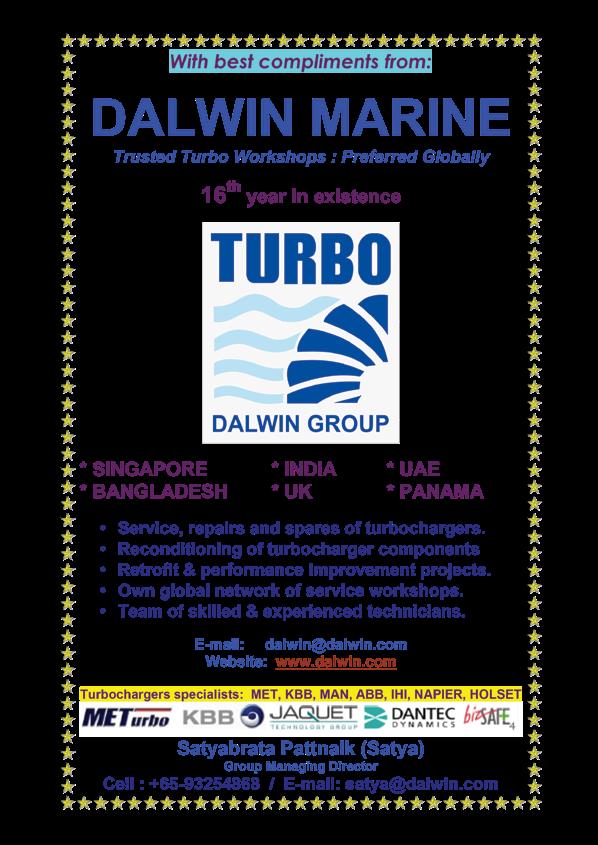
Recovery is sound only if it (comes) of itself. For any revival which is merely due to artificial stimulus leaves part of the work of depressions undone and adds, to an undigested remnant of maladjustment, new maladjustment of its own which has to be liquidated in turn, thus threatening business with another (worse) crisis ahead.
Joseph Schumpeter, noted Austrian Economist, Political ScientistThe questions worth delving into:
Why do economic/shipping cycles occur?

Cycles are a series of events that are regularly repeated and each event in the cycle is caused by the preceding event. Shipping cycles, like economic cycles, are recurring in pattern. It is not possible to perfectly match supply to demand. Supply will undershoot and overshoot demand periodically, more so because of the long gestation period from ordering to delivery of an ocean going vessel.
What aggravates these cycles into large swings is easy availability of credit. Credit gives buying power and leads to accumulation of Debt. Lending and borrowing is never done perfectly, leading to huge debt accumulation. Debt is a double edged sword- in good times it leads to higher profitability and during down cycles it leads to crisis and pain for individuals, companies, economies and the human race.
Shipping characteristically is a business with high Operating and Financial leverage. High degree of fixed costs and debt servicing needs lead to very low margins for the ship owners during downturns, (quite often struggling to breakeven), whereas during up cycles the increase freight rates/ charter rates do not require a proportionate increase in variable costs, leading to high profitability.
When shipping cycles are so repetitive, why decision makers find it difficult to avoid and restrict them?
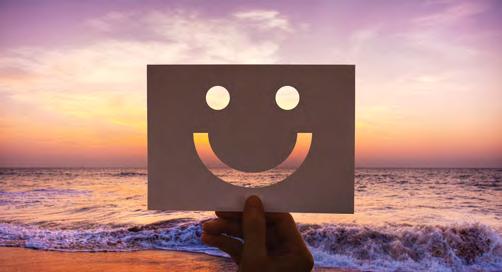 By KS Mahesh Roll number 4573 Class of 1997
By KS Mahesh Roll number 4573 Class of 1997

During up cycles, as companies have increasingly high growth rates in profitability and there is exuberance all around, it is difficult for CXOs, even if they are aware of increasing risks in the system, to step away from the race to the top. As rosy forecasts are made, present earnings are extrapolated to the distant future and the boards and investors of the companies’ egg on for more business expansion, the management gets carried away by the enthusiasm and pressures to keep up the momentum.
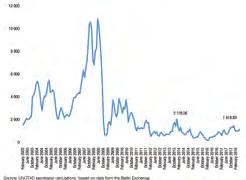
When the music stops, in terms of liquidity, things will be complicated. But as long as the music is playing, you’ve got to get up and dance. We’re still dancing.”
Chuck Prince, Citigroup Chief Executive, 2007Hence, overtime it becomes very important to develop a deep understanding of business cycles. Forecasts are only seldom right, as it involves looking into the future and the future is uncertain. Hence, one should be sceptical when relying on forecasts while making business decisions. It may be more apt to identify where the company/ industry is positioned in the shipping/ economic cycle and act accordingly
... otherwise irrational exuberance may lead to a ‘Race to the Bottom’
Worldly wisdom teaches that it is better for reputation to fail conventionally than to succeed unconventionally.
John Maynard Keynes, renowned British economistAtma, a young boy from a small town in the Indian hinterland, goes for his summer holidays to visit his uncle who lives by the sea. He makes new friends quite quickly and goes out to play with them on the beach. After a couple of hours, they decide to stop playing. All his friends go home, but he decides to stay a while longer. He stands gazing at the sea, watching in awe as the waves move closer and then retreat, roaring loudly and bringing in so many shells, fish and crabs of all sizes and then retreating with most of them and moving so much sand. He decides to sit down and take a little rest and marvel at the power of the sea. In the distance he can see some boats and further away, he sees some ships. His curiosity is piqued. He wonders what those big ships do.
He goes home and consults with some seniors in the family. They direct him to a family friend who knows more about this. He meets a Mariner and learns about the Merchant Navy. He hears about the many travels, the adventure of visiting many lands, meeting new people and having all kinds of pleasure. He hears about the great wealth that one can accumulate if one is good in his profession.
He decides that he wants to pursue a career in shipping. He devotes himself to the cause. Very soon he sails through the entrance examination and interview and finds himself in a premier educational institution. Time flies. Years later, he is a well-respected professional in the Marine Fraternity.
He has seen it all; wine, wealth and women – and all the vices of life. There are few places he hasn’t visited, few experiences that he has never had and yet he craves for something more. The rush that he felt in the beginning is no more the same. He wants more from life but he is unable to understand what. Money he has seen plenty of and it does not seem to allure him as much now.
He has become a lot more mellowed down as a person now. He feels young at heart but the body is having some trouble catching up. Quite often, he gets melancholy, and on rare occasions lonely even in the company of others. He misses his wife and kids, he misses his parents, his brothers, sisters and extended family. He misses his friends from the good old days. He misses the shopping, the movies and the malls. He misses the good time he had during his holidays, and the rare month he would take off from ship.
One day he lies down in bed, unable to sleep. He thinks about his life, about the choices he made and a sense of doubt creeps into his mind. Did make the right career choice? Would have been better off choosing something else? Must decide to pursue something else now, must retire? Will that make me happier? So many questions hound him.
After mulling over things for a couple of hours and feeling depressed, he falls asleep. After 3 days his contract ends and he goes ashore.
On the flight home, Atma finds himself next to a middle aged man. He is attracted to his calm demeanor, his warm and contented smile. He appears well travelled and very cultured. Atma is now curious and he decides to find out more about this gentleman, who stands out from everyone else on the aircraft.
Atma is impatient – he feels the urgency to interact with this man. He gobbles the inflight lunch and constantly glances at his co passenger,
looking for a chance to strike a conversation. After he finishes his lunch, he watches him enjoy his meal, savoring each bite, taking his time. Atma feels reluctant to disturb him while he eats. After what appears to him like a really long time, the older man finishes his lunch and the air hostess disposes off his plate. Atma checks his watch – just 15 minutes had passed but it felt like an eternity.
Atma smiles and says “ Sir, I am Atma and am travelling to India. What about you ?”
The gentlemam beams back and says ” Pleased to meet you Atma. I am Yogi and am going to India too.” Atma asks him “ How was your lunch ?
“ Yogi replies “ It was wonderful ! How about yours? Atma then realizes that he could not even remember how his lunch tasted. He had so many thoughts running in his head that he failed to relish his food.
Atma continued the conversation and very soon he learnt that Yogi was a Life Coach who was returning to India after delivering a series of seminars on Holistic living.
Atma proceeds to confide in him and seek a solution for his own dissatisfaction with life. He tells Yogi about his past and his dissatisfaction with his present inspite of all the wealth and resources he now has. He asks Yogi for his opinion on what should be his course of action to have a better future.
Yogi offers his personal experience about things. He says “ We are very similar in so many ways. too come from humble origins in India. struggled and got a good education and found a good job with an MNC. worked hard and earned well. also did a business and made a fortune. During the course of my life, performed actions with one – pointed focus, often times neglecting my parents, my wife, my kids and even my own health. I had no time for spiritual life, or for exercise or for social functions. One day I realized that I have all the things most people
MEDITATION & JOURNEY TO INNER PEACEdesire but I am not fully happy. Then with one pointed focus worked hard to find out WHY !!!
I realized that life is meant to be lived – one has to live in the Present. The seers of India called this living in Sattva Guna. Dwelling in the past is called Tamas and Contemplating the Future is in the Rajo Guna. One must try to live each moment as if it were our last. But that moment must be so lived as if there may be many such moments coming after this. It seems contradictory” he said as Atma looked a little bewildered. Yogi continued “ Usually living in the moment is connected with unrestricted sensory pleasures and this encourages many to try drugs and so many things considered harmful for the body. The Vedic concept of living in the moment is a little different. It recognizes the need to live in the moment, because then the mind is not burdened with the baggage, pain and troubles of the past; nor is the mind troubled by the worries of the future. The mind is conditioned and trained by past experiences and training to handle the current situation. The mind is also guided by intelligence and wisdom that there are so many factors beyond the scope of human control which shape the future. So the mind is trained to work in the PRESENT context and do its best in the present. This is called being in the NOW by some management Gurus. It has numerous advantages.
Aditya asked “ What are they?”
Yogi went on “Imagine you walk into an old friends home and start talking. You are happy to see him and if he dwells on a silly quarrel you had with him 15 years back, it will probably spoil your moment now. Being in the Moment also means prioritizing the various things which come up at that moment. To illustrate this, let us assume we are sitting with our wife or children and then the mobile rings. We sacrifice our moment with them to spend so much time on the phone. This makes them feel that they are less important to us. That time which we could have shared with them is lost forever and no amount of wealth can
bring that back. Investing in relationships we value is so crucial. Giving those relationships our undivided attention and nurturing it every day is required. Just as a plant needs water regularly, all relationships need regular time – quality time. In the same way, our body needs attention and care. A stitch in time saves nine. A spark if ignored can cause a big fire. Being in the moment does not mean we rule out the existence of a future. Rather it means that we understand that the future is going to be the present at a later point of time. So in order for one to have an apple tree, one must plant an apple seed and water it regularly. So care and proper attention on the present will make the future a pleasant present!!!
The whole idea of a Holistic Life hangs on certain principles – chief among them being - BEING in the PRESENT. This means making choices for the present that are the best given the available information. It also means making crucial decisions about the governing environment in which we live too – and may require sea changes too. Most importantly it means that we give our Present so much importance that we make carefully considered choices on how to spend each moment wisely. This is truly living in the moment – as if it were our last !!! If we value time and realize it is priceless – life will be whole and the heart will feel wholesome and happy.
Atma said “Thank you Yogi ji. I am grateful.”
The rest of the journey Atma spent in silent contemplation. He was ready to make any big decisions that were needed. He was confident that the joy that seemed to elude him for long would soon be in his grasp. ▄
All our life, we are used to doing something or the other. What happens when we sit still and do nothing? Meditation happens to us.
Samarpan Meditation is a simple meditation technique for the modern person. It’s fuss-free: non-religious, no pre-requirements, free and soul-enriching.
Join us for an introduction. And let Samarpan Meditation do the rest for you.
Every Saturday at 5pm at Midview City, 26 Sin Ming Lane, 02-114, S573971
For more info: visit www.journey2innerpeace.com or call Cynthia 8299 8279.

Jotun SeaStock Management Solution. The control you need.


3393
Class of 1987
Many seamen, if not all, come out to sea for the attraction of a life, un-fettered with the restraints of life on land. A few may get enticed by a chance to see the world too. Whatever the reason maybe, those who live and work at sea continuously confront social sequestration.
Ideally, a seafarer who starts early and rises to the highest position on a ship will quit sailing before reaching 40 and look for Shore based jobs. Mostly because it makes more sense and gives a connect to the life ahead with the thinking of being at home, with family and loved ones. Also, to connect more to the society and to get involved with ones responsibilities and routine life ashore.
Another reason may be that life on board ships (as so hear) has become extremely demanding with stringent Maritime Regulations coming up each year. Life as a seafarer has become more hectic, laborious, and monotonous.

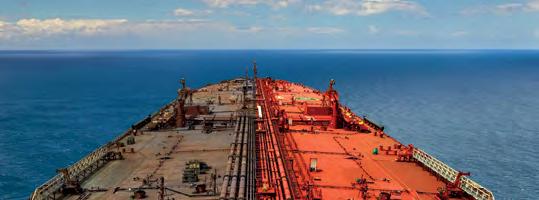
The reason may be any but the hope to be living with family is a great enough incentive to leave one aspect of the shipping industry and coming ashore. However, there are a few pitfalls.
• B eing on ships, even if its a hard life, doesn’t prepare you for life on land. A gap of 12 to 15 years brings many changes back home in your absence, most of them you are not aware of.
• We all know that cells in our body change constantly and with that our surroundings, living patterns and the people around also change, even if they are family and friends. In this situation to maintain equilibrium within our internal and external selves becomes a struggle.
All the above can be silently pre-empted or resolved by focusing on the Emotional, Financial and Physical areas of life.
Be prepared to engage more with relatives and friends and society in general, because at sea one is naturally detached. Keeping a schedule for your self at the micro (personal) and macro level helps to draw the boundaries.
The pressures ashore are now multifold. Constant demands are made on you. The available time has to be guarded and devoted to yourself and others, which requires self-awareness, and then to try and understand others emotional needs.
Finance is one area where whatever you know or do is never enough and requires more to read, understand and act on. So, in place of taking care of everything yourself, go ahead and take help from a professional. Ones savings, if invested well, should give good returns. It should not have been carelessly spent or invested on meaningless luxuries, or in businesses without knowing anything of it.
Then comes physical, most seafarers leave shipping life thinking that it will be a cake walk and what worse can happen. But as shore life is, it sucks you in completely. The first thing we forget taking good care of is, our physical self as we feel everything else is more important and by the time we deal with that important work, we are completely exhausted. Hence the lesson is to take good care of our body which is the key to achieve everything else.
Any marine vessel in operation needs to be maintained. Not merely for its aesthetic appeal, but also for its efficient and effective operation and steel preservation.
Jotun SeaStock Management Solution offers superior control and predictability of your onboard maintenance. So you can save time, reduce hassle and focus on what really matters. Your core business.

Maintain your business the professional way. With Jotun.




When you need it. jotun.com
• A s soon as you come ashore one of the first things that affects you is the Financial angle. Suddenly, you are now liable for housing, utilities, medical, transportation etc. These factors were never an issue earlier even if they were, you were not dealing with them.
• With no w grown-up children and themselves being involved in their own life and studies, it becomes difficult to connect if the connection is not developed earlier.
• Mana ging everything yourself on ships is no longer the given fact. Now it’s a balance between you, family, colleagues, bosses etc. Managing all these relationships can be a challenge.
And in the end, would like to mention a saying by George William Curtis - ”It is not so much the Ship as the skillful sailing that ensures a prosperous voyage”
Same goes for the life too.
Wishing all of you the best times ahead and SMOOTH SAILING ASHORE. ▄
to keep your fleet in shape.


Here are three cadets of three different generations - DMET tradition of family bonding with roll number of same last two digits.
Sanjiv Mishra – 3806
Prem Allencherry – 3906
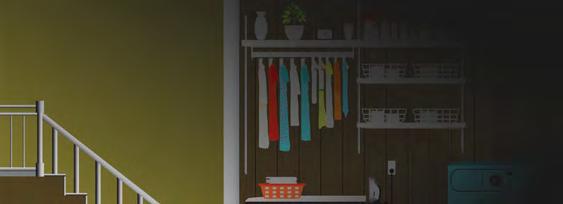
Anshul Saxena- 4306

Same Batch - Brothers (Bro)
Batch above - Pop
2 Batches above - Grand-Pop (GP)
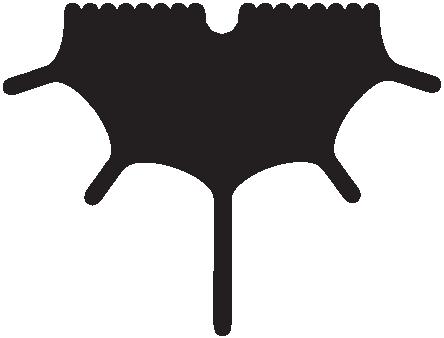
3 or more batches above - Great Grand-Pop (GGP)
Challenge us if you think you can go beyond 3G
Challenge - Anyone with 4 generations clicked together will be published next year with gift* voucher.

*Phone not included.
By Tivon Roy Son of Kaushik Roy Roll Number 4579One day, Sally had broken her mother’s favorite vase. When her mother came back home, the first thing she saw, was Sally sweeping fragments of the broken China from the floor When Sally’s mother found out that it was her favorite vase, she screamed “SALLY MY PRICELESS PORCELAIN!!!”, anguish and anger written all over her face.The fact that it was the end of her most expensive and prized collection piece consumed her so much, she stormed out of the house to let off the steam. Just before leaving, she looked sternly into Sally’s eyes ,and her voice quivered as she threatened “When come back want to see the basement cleaned, mopped and organized, otherwise”. Her voice trailed off as the front door BANGED behind her. Upon hearing those words, Sally’s eyes widened in disbelief, because she knew exactly what the consequences were going to be if she’d, dare take the threat lightly.The basement was the dirtiest part of the house not to mention spooky too. She had as a child growing up in the house heard many strange noises coming up from the basement. She had never stepped into the basement after the frighful experience of accidentally getting locked in there. Her parents had been attending her brother’s graduation ceremony in a different state and her grandmother had volunteered to stay the night over in their home to watch over Sally .The half an hour she had spent in the dank, pitch black darkenss of the spooky basement had been a nightmare for her. She had screamed for help till her voice was hoarse only to be found lying unconscious on the basement floor half and hour later by her grandmother.
Sally reluctantly grabbed the materials she needed to clean the basement from the storeroom, slumping forward on the mop as if her spine had been removed. She turned on her flashlight and walked down the creaky steps, into the basement. Her brain told her one thing as soon as she stepped into the basement. GET OUT OF HERE NOW! There were dozens of spiderwebs strewn across the basement ceiling. They reminded her of those humongous tarantulas she had once seen at the zoo. Her veins were throbbing and her heart was beating faster
than usual. Down in the basement, the air was hot and musty. It was as if she had entered a volcano full of lava. The dirty uneven floor only made her more scared. Suddenly she heard a hiss behind her . She turned around, alarmed, but the sound was only coming from the boiler. As she mopped farther into the basement, the surroundings became darker, cooler, damp and there was now water dripping from the ceiling. The drastic change in temperature had relaxed her nerves a bit, when a realization dawned on her. Sally thought to herself ”Don’t spider’s live in dark and damp places”, she looked up and noticed that there were now more webs than before. When she looked up she saw four pairs of big yellow eyes staring at her face. She hesitantly raised her flashlight up to see what it was. It was a humongous tarantula that could easily bite her hand off with its huge pincers. She could tell from it’s size that it had been eating a lot of food. Sally fainted in utter shock of seeing such a big tarantula. After some time, when she woke up, cold water was dripping on her face. Sally was in a daze she sat up, looked to her side and saw the tarantula clicking its pincers together. It sounded familiar to her. It seemed to be some sort of code. She figured it out to be the morse code. Just to check if her guess had been right, she clicked back “Do-you-understand-me?”. Surprisingly it replied, “Yes”. It turned out to be a harmless spider. Just as she was about to leave the basement, she heard her mother running down the basement steps, calling for her. Sally’s mother hugged Sally tightly and told her that she had made a huge mistake in making her clean the basement. Sally told her mother that she had found a spider which was smart enough to communicate using morse code. After observing the spider for a few days, she noticed that it could skilfully use its pincers to rip food to pieces thus, making Sally name it Ripper. Sally researched on how to take care of spiders. On seeing Sally’s interest and growing fondness for the tarantula her mother let Sally keep Ripper as a pet.
You just have to face your fears because in reality, they are not as bad as they seem. ▄


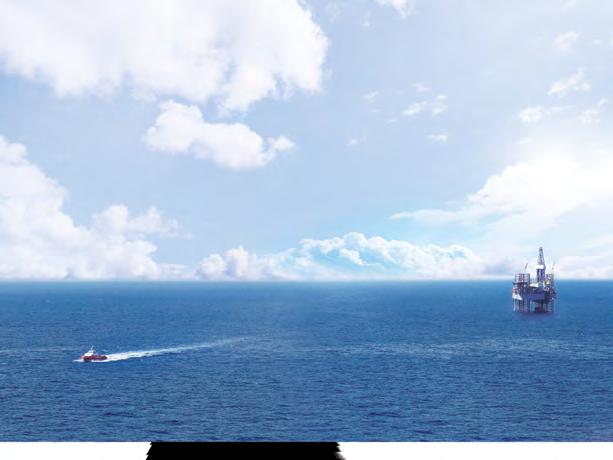



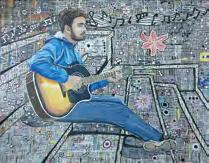



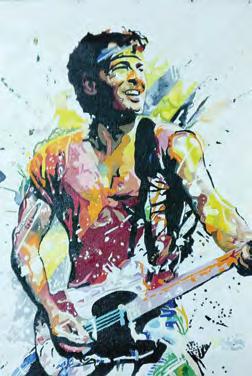




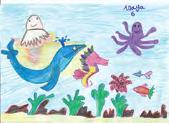

10


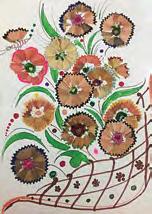










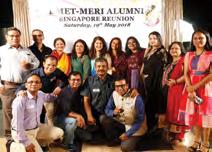
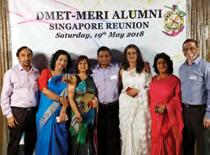














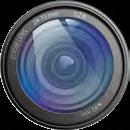
Remembering and preserving the important events and people in our lives
Family Day 2018 @ Wavehouse, Sentosa






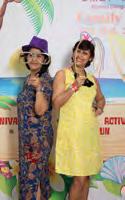













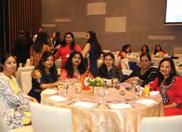




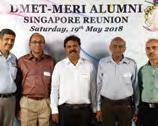



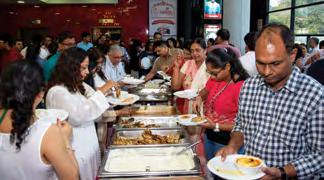
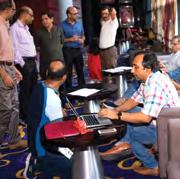


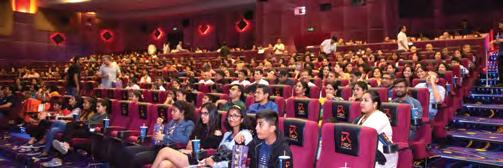
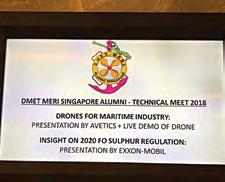





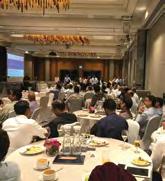

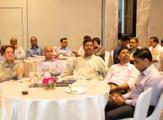
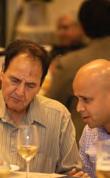

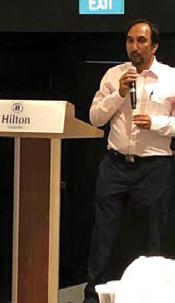



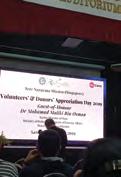

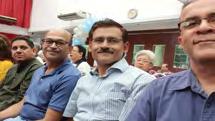


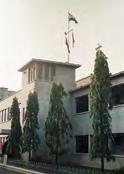

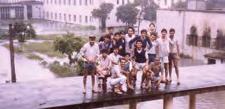
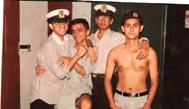
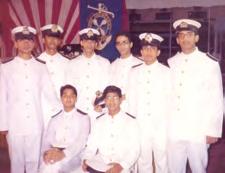

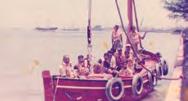






1959 R.K. Agrawal 326 Retired, Singapore Polytechnic
1961 K.M. Raju 449 Retired (from Ngee Ann Polytec)
1963 Upendra Salvi 548Retired
1963 Bala Subramaniam Adani shipping pte Ltd
1964 Raghuvir C. Bhavnani 645 Viswalab (Singapore) Pte. Ltd.
1964 R. N. Saxena 685 Ubin Shipping Pte. Ltd.
1969 Ravinder N Chadha 1164Retired
1969 Subir Mukherji 1174 Qmetryx Pte. Ltd.
1969 Anil Luthra 1179 Avalontec Engineering (Singapore) Pte. Ltd.
1969 Syed Md Mahmoodulla 1187Retired
1969 Amit Ray 1210Retired
1970 Vishnu Saili 1242 Trishsai Marine Services, Singapore
1970 S. Jairaj 1264 M.T.M. Ship Management Pte. Ltd.
1970 Francis J. Rodrigues 1273 Ecoship Sdn Bhd Malaysia
1970 Anju Bishnoi 1283 MARITEC PTE LTD, SINGAPORE
1970 S. K. Sharma Conard Engg & Trading Pte. Ltd.
1971 Pradeep Kumar Misra 1375 Thome Ship Management Pte. Ltd.
1972 Rajan Bhandari 1495 Executive ShipMgmt Pte. Ltd
1973 Deepak Kamran 1538
1973 Raj Sheikhawat 1563 Sealine Management Pte. Ltd.
1973 B. N. Prasad 1627 IS containers
1974 Vijay Bhandari 1672 Shell Eastern Trading Pte. Ltd.

1974 Hemant S.Pathania 1693 NYK Shipmanagement Pte. Ltd.
1974 Himadri Shankar Basak 1734
1976 Aditya Kumar Ruhil 1894 Eagle Bulk Ship Management Ltd.
1976 Amitabh Agrawal 1903 Wilhelmsen Ship Mgmt Pte. Ltd.
1976 A. K. Mohapatra 1915 Unix Line Pte. Ltd.
1976 Sanjay Anand 1933 3 Pillars Pte Ltd
1977 J. Orson Lobo 1959 Anglo-Eastern Shipmgmt Pte. Ltd.
1977 P. K. Thapliyal 1961 Gearbulk Singapore Pte Ltd

1977 Vinod Shah 1964 Anglo-Eastern Maritime Services Pte Ltd
1977 R. S. Shekhawat 1972 Arti Marine Services
1977 Ved P. Trivedi 1993 Agnito International Singapore
1977 Arvind Sharma 2028 Bernhard Schulte Shipmgmt Pte Ltd.
1977 Anil Ahuja 2031
1977 Arun Ahluwalia 2519 MSI Ship Management Pte. Ltd.
1977 B. S. Teeka 2540 Executive ShipMgmt Pte. Ltd
1977 Venkatesh Krishnamurthi 2544 Executive ShipMgmt Pte. Ltd
1977 Unnikrishnan Edakunni 2545 Tiansan Shipping pte ltd
1977 K. Cheluvaraj 2558 NYK Shipmanagement Pte. Ltd.
1977 Naresh Chand 2562 United Ocean Shipgmt Pte. Ltd.
1978 Srinath Medepalli 2042 Wilhelmsen Ship Management
1978 Rashim Berry 2077 Totus Project Management Pte Ltd
1978 Rahul Bhatnagar 2082 R.B.Offshore (Technical) Pte. Ltd.
1978 K. K. Kumar 2521 KK maritime
1980 Satyaki Datta 2236 BW tanker
1980 S. Hariharan 2239 MTM Ship Management Pte. Ltd.
1980 Bhavkaran Singh 2255 Seateam Management Pte. Ltd.
1980 Rajiv Sankar 2325 Exxon Mobil Asia Pacific Ltd.
1980 Ashok Kumar 2695 Executive ship management Pte Ltd.
1980 Avtar Singh Ahluwalia 2757 Deep sea supply


1981 Gurjit Singh Chadha 2421 OCS services pte Ltd.
1981 Deepak Seth 2431 K Line Ship Management Pte. Ltd.
1981 Bimal Kumar Sinha 2433AET
1981 Fuad Siddique 2452 Abby marine
1981 Rayomand Dadachanji 2461 Masterbulk Ship Management Ltd.
1981 Yatin Gangla 2480 Thome Ship Management Pte. Ltd.
1981 Ashutosh Rao 2491 Thome Ship Management Pte. Ltd.
1981 Sanjay Verma 2496 Wärtsilä Singapore Pte. Ltd.
1981 Sanford D'souza 2990 OCS services Ltd.
1982 Rajkrish Kumaran 2579 Bernhard Schulte Shipmgmt Pte Ltd.
1982 Sheshashayee Venkatraman 2599 Radical Advice
1982 Shaj Thayil 2624 APL Co. Pte. Ltd.
1982 Rajiv Pritmani 2625 Good Wood Ship Management
1982 Rakesh Lamba 2637 Samco Shipping
1982 P. V. Suresh 2648 Executive Offshore Pte. Ltd.
1982 Kris Kumar 2659 Digital Realty
1982 Prakash Rebala 2812 Synergy Marine Pte Ltd
1982 Chaudhari Prashant 2855 MOL Tankship Management (Asia)
1982 Tatta Seshu Chary 2972 Green Sails, Singapore
1983 Venkatesh Narayan 2794Accenture
1983 Cletus DeSouza 2852 Epic Ship Management Pte. Ltd.
1984 Akhil Dalakoti 3330 world tanker
1985 Rajendra Gurnani 2985 Rickmers Shipgmt Pte. Ltd.
1985 Anand Rao 3001 Galvantrix Pte Ltd
1985 Arvind Raja 3004 Unix Line Pte. Ltd.
1985 Arvind Kumar Saxena 3006 Executive ShipMgmt Pte. Ltd
1985 S. P. Singh 3007 Executive ShipMgmt Pte. Ltd.
1985 Vivek Dwivedi 3013 GP global
1985 Srikant Ayyer 3014 Andrew Moore & associates
1985 Vijay Dattatreya 3015 Omni Offshore Terminals Pte. Ltd.


1985 Kaushik Kumar Seal 3040 DNV GL
1985 Sanjay Gupta 3051 Navig8 ship management
1985 Salil Kumar 3060 MMS Co Ltd
1990 Vinay Dhillon 3735 Anglo-Eastern Shipmgmt Pte. Ltd.
1990 Sanjay Kumar 3740 MOL Tankship Management (Asia)
1990 Ramesh Kumar Patro 3742 Eastern Pacific Shipping Pte Ltd
1990 Darshan Gaur 3753 Thome Ship Management Pte. Ltd.
1990 A. S. Mande 3754 Maersk Tankers Singapore Pte. Ltd.
1991 Praveen Jindal 3779 Neom Maritime (Singapore) Pte. Ltd.
1991 Sanjiv Mishra 3806 DNV GL
1991 S. C. Nayak 3807 MMS Co. Ltd.
1992 V. Sanjeev 3822 Eagle Star ship mangement
1992 Upendra Kumar Dubey 3823 laurel ship management Pte. Ltd.
1992 Karmesh Kumar Tiwari 3826 Diamond Star shipping Pte. Ltd.
1992 Neeraj Uberoi 3827 MOL Ship Management Singapore
1992 K. Bampal 3840 MOL Tankship Management (Asia)
1992 Arbind Kumar Singh 3845 Asian-Alliance Ship Mgmt Pte. Ltd.
1992 Subashsih Basak 3860 Chevron Asia Pacific Shipping
1992 Indrajeet Sengupta 3862 BP
1992 Avanish pandey 3868 MSI Ship Management Pte. Ltd.
1992 Sat Guru Saran Singh 3870 world tanker
1992 D. C. Jha 3871 MSI Ship Management Pte. Ltd.
1992 Tarkeshwar prasad 3880 Anglo-Eastern ShipMgmt Pte. Ltd.
1992 Sanjay Verma 3882 Thome Ship Management Pte. Ltd.
1992 Rajesh Kumar 3883 Anglo-Eastern Shipmgmt Pte. Ltd.
1992 Manoj Parashar 3885 MSI Ship Management Pte. Ltd.
1992 Ravi Kant Dwivedi 3888 Anglo-Eastern Shipmgmt Pte. Ltd.
1992 Manoj Kumar 3889 MOL Tankship Management (Asia)
1992 Rajesh Kumar 3894 MOL Ship Management Singapore
1992 Vibhor Kumar 3895 MOL tankShip Management (Asia)
1992
1993
Dwivedi 3947 Executive ShipMgmt Pte. Ltd
1993 Shelu Jha 3949 Anglo-Eastern Shipmgmt Pte. Ltd.
1993 Ashish Bagchi 3952MOL
1993 Rajesh Verma 3965 Thawe marine pte ltd.
1993 A. K. Awasthi 3966 MOL Tankship Management (Asia)
1993 Bhupinder singh soin 3970 MOL Tankship Management (Asia)
1993 Vinay Gupta 3972 Union Marine Management Services
1993 Samir Batra 3996 NYK Shipmanagement Pte. Ltd.
1993 Rajeev Bhatt 3999 MOL ship Management Singapore
1993 Rajiv Sarin 4002 Alpha Laval Singapore Pte Ltd
1993 Gurpreet Singh 4004 Neom Maritime (Singapore) Pte. Ltd.
1993 Kamlesh Kumar 4005 MOL (Asia)
1993Nishit 4009 MOL Tankship Management (Asia)
1993 Nandan Sharma 4011 Maersk Tankers Singapore Pte. Ltd.
1993 Tirtha Sarathi Chattaraj 4029
Anglo-Eastern Shipmgmt Pte. Ltd.
1993 Avijit Parya 4031 Executive ShipMgmt Pte. Ltd.
1993 Pramod
1994 Kiran Jacob 4127ABS
1994 Sumit Kumar 4145 Anglo-Eastren Shipmgmt Pte. Ltd.
1994 Anujit Prasad 4455 Arc marine Pte Ltd.
1994 Prashant Kumar 4466 Omni Offshore Terminals Pte. Ltd.

2001 Rajnish Kumar 5092 SE Shipping Lines Pte. Ltd.
2001Anshuman Anglo eastern ship management
2002 Ruchi Tripathi 5096 Chevron Asia Pacific Pte Ltd
2002 Abhishek Goyal 5097 Fleet Ship Management Pte Ltd.
2002 Anuj Goyal 5115 Epic Gas Ltd
2002 Pranesh Kumar 5171 BW Tankers
2002 Sumit Kumar 5210 BW Maritime
2002 Shasi Kumar 5217 MTM Ship Management
2002 Vikram Dutt 5221 Avigna Consulting Pte Ltd.
2003 Amit Sharma 5234 Laurel Ship Management Pte. Ltd.
2003 Gaurav Mishra 5264 Master Systems
2003 Gurvindar Singh Sokhi 5266 Fleet Ship Management Pte Ltd.
2003 Niranjan Kumar 5270 Fleet Ship Management Pte Ltd.
2003 Mritunjay Mishra 5283 Fleet Ship Management Pte Ltd.
2003 Prashant Gyan 5298 Avigna Consulting Pte Ltd.
2003 Ravi Ranjan 5307 Fleet Ship Management Pte Ltd.
2003 Rupesh Kumar 5313 MTM Ship Management
2003 Shyamal Tewari 5323 Fleet Ship Management Pte Ltd.
2003 Subhash ranjan Singh 5331 Seadrill Management (S) Pte. Ltd.
2003 Sudipto Chowdhury 5332 Fleet Ship Management Pte Ltd.
2003 Tajnder Singh 5336 Fleet Ship Management Pte. Ltd.
2004 Abhishek Singhal 5359 Fleet ship management pte ltd
2004 Amol Mishra 5366 Navico Marine Singapore
2004 Jagadendu Basu Roy 5399 Neom Maritime (Singapore) Pte. Ltd.
2004 Jitendra Kumar 5401 Executive Ship Mgt
2004 Jitendra Kumar 5401 Goodwood ship management
2004 Manish Prashant 5415 Executive Ship Mgt
2004 Nitin Kumar Chowdhary 5421 Executive Ship Mgt
2004 Subhash Kumar Sahu 5458 Thome Ship Management Pte. Ltd.
2004 Uttam Kumar 5461 Alpha Ori Technologies
2004 Uttam Kumar 5461 Alpha Ori Technologies
2004 Vivek Sharma 5463 Executive Ship Mgt
2004 Vishal Anand 5467 Executive ship mgt
2004 Ankit Manral 5376 Comtech (Singapore)
2005 Prasenjit Bhattacharya 5542 Damco Logistics PLtd (A P Moller Maersk
2005 Ranjan Kumar Tripathi 5553 Thawe marine pte ltd.
2005 Susant Nameirakpam 5570 Fleet ship management pte ;td
2006 Gurvindar Singh Sokhi 5266 Diamond ship management Pte Ltd
2006 Rohit Kumar Olix 5668 Thome Ship Management Pte. Ltd.
2009 Sankalp Dubey 6051 Fleet Ship Management Pte Ltd.
2009 Varun Kapoor 6062 Fleet Ship mangement
2009 Varun Kumar Gupta 6065 Fleet Ship Management Pte Ltd.
Of the good times spent by the family members and friends. These are few of the DMETians we lost from our Alumni in the past year. There might be few of them which we didn’t get intimation about or are not included. Nevertheless on behalf of DMET alumni. Our heartfelt condolences May god bless the family and power to overcome this big loss.
Left us on 18th October 2018.
Shri Ashwin Kumar Atre became Technical Superintendent and Managing Director for Wallem Ship Management, Hong Kong at an early age.
In his illustrious career he worked with Vanguard Ship Management Singapore, NYK Ship Management Singapore, as Director at Meratus Lines, Surabaya, as Managing Director with Target Ship Management, Singapore and Integrity Ship Management, Singapore.

Shri Ashwin Atre with his talent and experience served shipping industry in his illustrious career and showed the way to lead for the generations to come.
He is survived by his wife Smt. Saraswati and son Mr. Anand Atre.

As DMET Alumni member, it is our fortune to have great personality like Shri Ashwin Kumar Atre as part of our fraternity and we pray to God to bless the great soul.
Top Pic Young Ashwin Kumar Atre in decade 1960’s Middle Pic ATRE SAN When Managing director NYK Ship Management 2001- 2008 Bottom Pic ATRE SAN When undergoing treatment in MAY 2018.
Abhijit
An ardent football enthusiast and player Played for Rankin Sadan during the DMET days and also was part of champions team in college A smiling face and will be missed by his family friends and acquaintances.
After his DMET and Sailing days he joined as MMD Surveyor later on he was GM technical for ISS Kolkata, was also a Sr Faculty member of Hoon Maritime institute Kolkata


21 November 1950 to 5 March 2019
A very nice guy at heart, with his head ever engulfed in a cloud of smoke, Subimal had only one love in life - fags. Comrade Chatto wiith a gift of oratory, he could have made a fine statesman. He showed his talent in the technical field too, by setting up an ingenious model of a radio-controlled ship while in DMET.
After passing out DMET, Chatto joined ISS and completed combined Chiefs ticket later. He took a shore job early in Babcock Boilers at Kolkata. Heart disease halted his shipping career. He joined offshore and then got into teaching. He is survived by his wife Sharbani, a civil engineer who retired from WB state govt service, and 2 daughters, both engineers.



04 September 1952 to 26
February 2018
Academically gifted Asim was a national scholarship holder when he joined DMET. Good natured ‘Ghattu’, who put his ideals before anything else, could overcome any obstacle to achieve his aspirations. Very much an optimist, he had plain contempt for those with contrary views. He gave the impression of being a bookworm but was far from being so, and yet fared remarkably well in his examinations in DMET.
After passing out from DMET, Asim was quite a private person. He had been sailing all through his working life. He did his Extra First-Class from India. He had kidney failure and was on dialysis for quite some time. Unfortunately, he could not get a donor. He is survived by wife Shakuntala and a son, who is an orthopedic doctor.
Amitava Mukherjee was a cadet of the 1979-1983 batch.



In the first year, he was nicknamed “Handy”, as it was deemed that he was handsome. The “Handy” name stuck to him, till his tragic & untimely passing away on 20th March 2019.
He had sailed for a short period of time initially. Thereafter he quit sailing to pursue his MBA.. In early 90’s, he again got in touch with batchmates after he had just married. He moved from Kolkata to Mumbai some time later & thereafter he moved to Dubai after a few years.
Handy was ever willing to lend a helping hand to all. In fact food was his passion. He loved to organise parties, usually at his home or barbecue picnics out in the desert.Many a boisterous evenings were spent at his place in Dubai.

He is survived by his wife, a daughter & a son. His daughter works in Dubai. His son is studying in Toronto, Canada.
Contributed by Batch of 1979 - 1983 Subir Bose



27th Nov 1949 - 2nd April 2019
With his name, Arnab, meaning sea, he was destined to be a mariner! Fondly known as ‘Ghotu’ (for his stocky Ghototkoch-like structure) & ‘Blondie’ (for being a Clint Eastwood fan), he was a happy-go-lucky person who never let anything affect his positivity.
He sailed all his working life. Post retirement he led a full life kickstarting his day with a morning walk and ending the evening with his single malts. He always considered himself lucky and he was lucky in his last hours too as he passed away peacefully in his sleep after his regular activities the day before. He is survived by his loving familywife Lina, son Amitava and daughter Anuradha.
On March 25th 2019, Umesh Chandra of the DMET Class of 2003, roll no.-5339 passed away due to complications after a medical procedure.


Umesh was born in Jaunpur, on 11 March 1978, belonging to a very humble farming background and never missed the opportunity to help friends or family members. He is a source of motivation for many pupils from his native village.
In the very first year of college, he achieved ‘fame’ by playing a portly girl in a skit during the college fest. Umesh is survived by his wife Rubi and daughters Anandi (5 yr old) & Arunima (3 yr old) now live in Kanpur.
You will remain immortal in our hearts, Umesh. WE WILL MISS YOU, FRIEND!!!

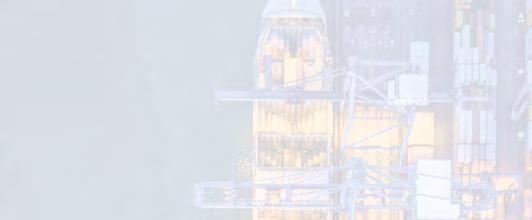


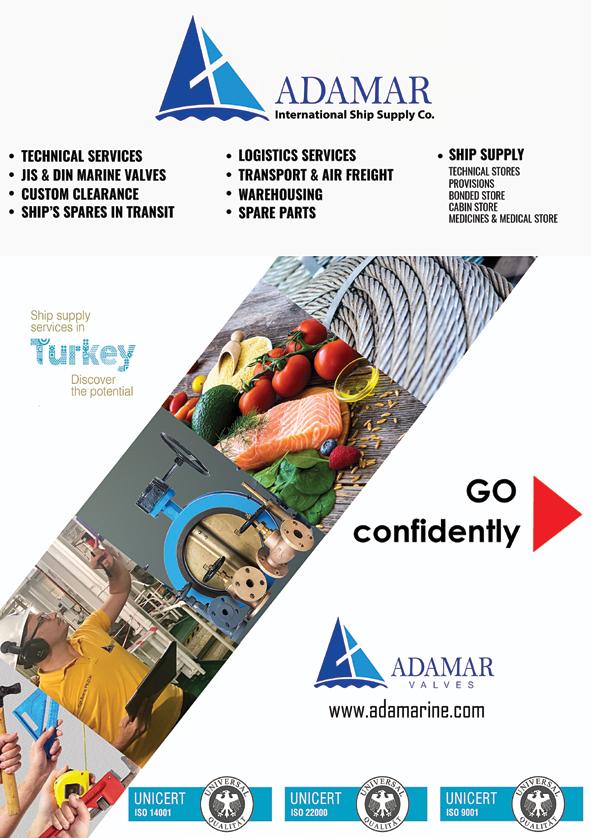

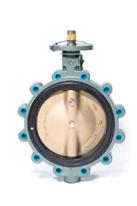

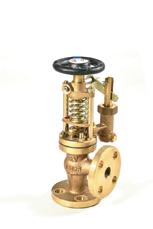




YOUR BENEFIT:
LOWEST LIFE CYCLE COSTS
UNIQUE SOLUTION WITH MAXIMIZED AVAILABILITY FOR YOUR BOIL-OFF GAS APPLICATION
Best for ammonia, LNG, LPG, LEG, and other hydrocarbon gases
No need for redundant compressor
Contactless labyrinth sealing technology – no temperature sensitive piston & packing rings – no wear
Longest mean time between overhaul (MTBO) because of less wear parts
Gas-tight-design for zero emissions
Flexible shut-downs and start-ups without pre-cooling
No. 1 in labyrinth-sealed compressors

Full range of services and top performing components through global organization and local service centers
→ www.recip.com/laby
